

Vilpak sustainability in review
Sustainable growth for our clients, employees, partners, investors, and communities


Sustainable growth for our clients, employees, partners, investors, and communities
Vilniaus Pakuotė UAB (Vilpak), established in 2011 as a part of the printing group Grafija, is a modern, socially responsible cardboard packaging producer.
For Vilpak, sustainability is the framework for successful business.We believe that we have a responsibility in contributing to a sustainable future.
Translate a strategy into a business model by finding a way to unlock long-term value for the company while delivering value to all stakeholders
Despite ongoing obstacles and economic challenges, related to the COVID-19 pandemic, we have worked closely together and delivered on our purpose to remain stable in these challenging times and meet the needs of our stakeholders as an essential business mission - our commitment to provide the best packaging solutions in terms of quality and safety.
In 2021, the situation in the global supply chain for raw materials remains a challenge. In addition we had energy prices dramatically raised. In such difficult circumstances we had to act quickly, make decisions, and double our efforts to ensure stability in our production and in servicing the needs of our customers. We remain strategically on track despite all these challenges.
The performance of a company is no longer solely measured based on financial metrics; Environmental, Social, and Governance metrics are becoming equally important. We, as a company, aim to create value for all of our stakeholders with our sustainable packaging solutions, close collaboration along the value chain, and active employee engagement. This year we updated and aligned our strategic plan until 2025 based on the three ESG pillars - an important step towards building sustainable development. For Vilpak, sustainability is a core element of its strategy: sustainability targets are based on strategic business objectives and corporate responsibility Materiality Assessment.
The environmentally-friendly origin of our products, and our dedication to sustainable innovation, make us the ‘go-to’ manufacturer for a growing numbers of customers and partners. Continuous development for the next year will be supported further by enhanced employee trainings, integration of the key corporate values, maximizing the renewable sources of energy running our manufacturing site, and further development know-how of alternative raw materials that will help us in ensuring that all of our products are recyclable. Vilpak unconditionally supports the principles of the United Nations Global Compact on human rights, labor rights, the environment, and the prevention of corruption. We are committed to continually improving the integration of sustainable development goals into our strategy, company culture, and activities.
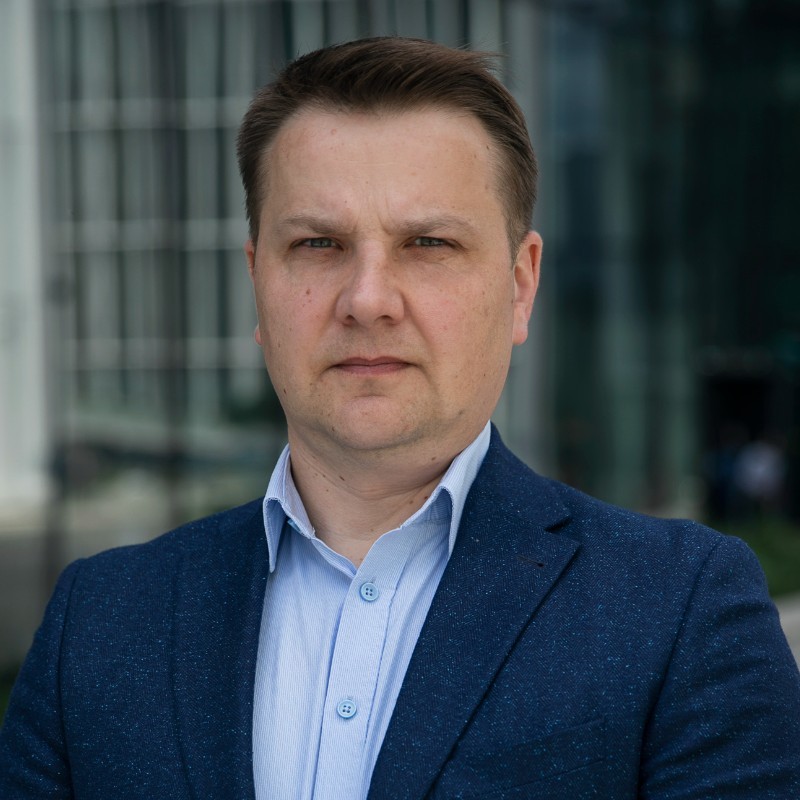
New ERP system Business Central goes live
Two procurement tenders won in total value of EUR 3,2M Eur
Successfully passed financial audit
Completed moving of warehouse to new warehousing premises of 3,5 k sq.m. size
Vilpak successfully passed BRC audit, received AA level certificate
New tunnel from the production premises to the new warehouse commences operation, significantly increasing the speed of internal raw materials and finished production traffic
Vilpak operates in accordance with a defined strategic plan until 2025, defined and approved by the top management team.
It sets out the company’s vision and mission, defines its objectives and serves as a blueprint, ensuring that the entire organisation is working towards the same goals and supports a sense of shared responsibility amongst employees.
We are in business to provide our customers with the best paper-based packaging solutions in terms of quality, safety, and sustainability.
To be a reliable partner and the preferred supplier for companies when it comes to sustainable, innovative, and intelligent paper-based packaging solutions.
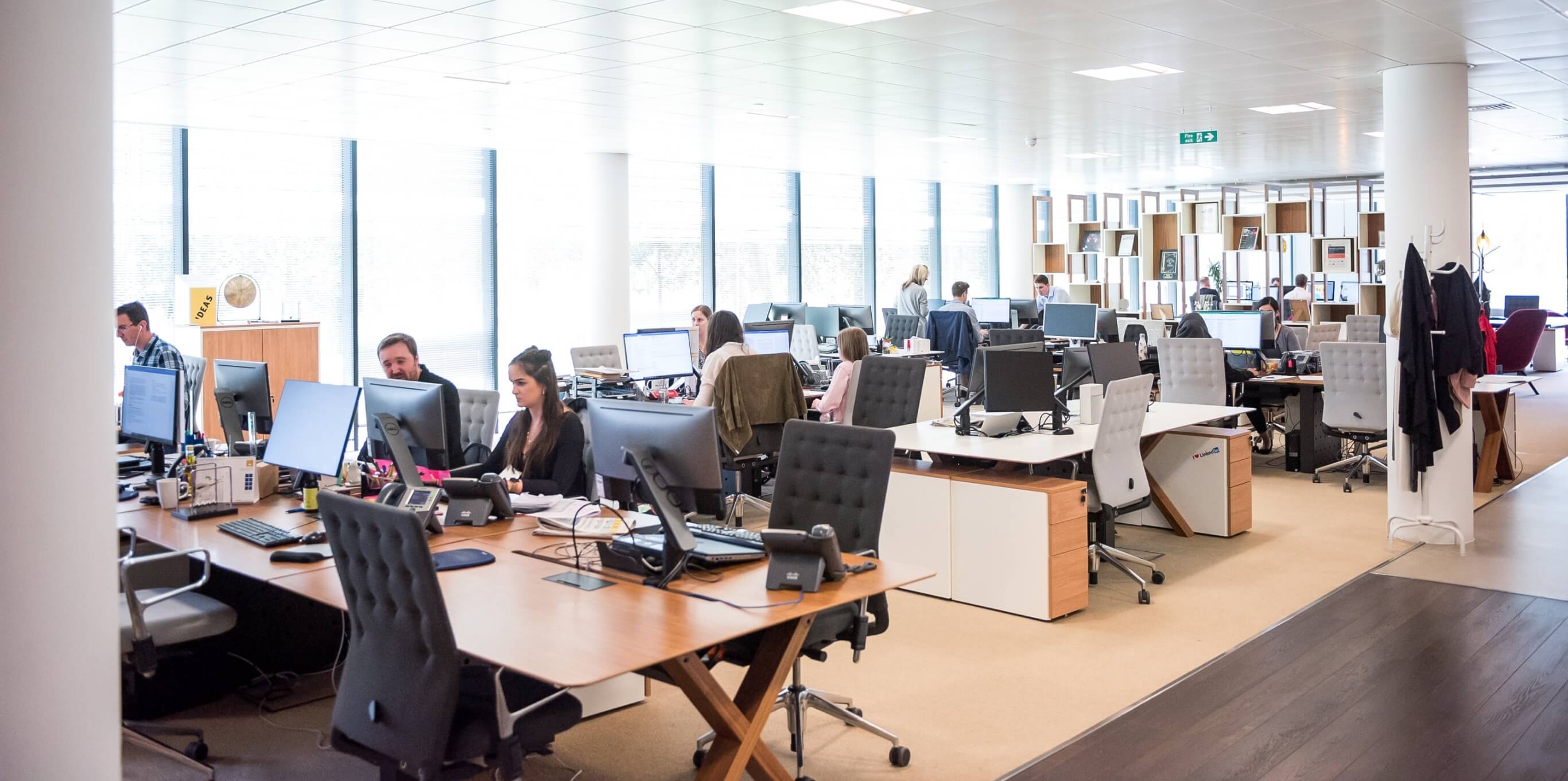
We have defined a set of core values, that gives us a framework for leadership and influences our behavior in everything we do.
The following core values define, what is important to us, what we stand for, and what drives our business.
Develop trustworthy relationships with our customers, suppliers, partners, and other stakeholders. Respond to growing demands and expectations with the best packaging solutions and maximize the positive impact of our operations throughout the supply chain.
Providing safe, innovative, and environmentally sound products to our customers and end-users thanks to the expertise and commitment of all our employees by connecting new ideas and challenges with business realities.
Continuous improvement of the management system: learning, sharing, and implementing.
Sustainable use of natural resources and pollution prevention. Responsibility: we stick to our commitments, act with uncompromising transparency and integrity, and make responsible decisions based on professional standards by respecting our social and physical environment.
We achieve more when we collaborate and work in a team. Our daily work is based on long-term ambitions and a forward-looking approach.
Our strategic goals aligned with the team culture, employee engagement, and performance improve outline a destination of where we want the business to get over time.
We help our clients to find the best eco-friendly solution for packing their products, which is the most compliant for their unique needs. We make their product packaging journey easy and sustainable.
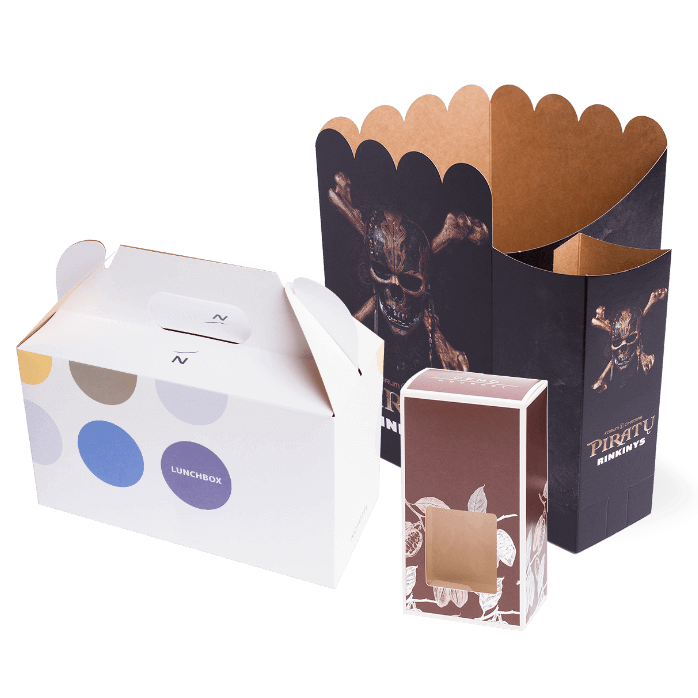
We are offering a wide range of folding cartons – from standard folding boxes to complex multipacks or pastry boxes – using a variety of folding techniques.
Our boxes and trays are suitable for hand or automatic erection, depending on your requirments.
LIGHTWEIGHT AND RECYCLABLE. It is an ecological alternative as this is a lightweight and recyclable material.
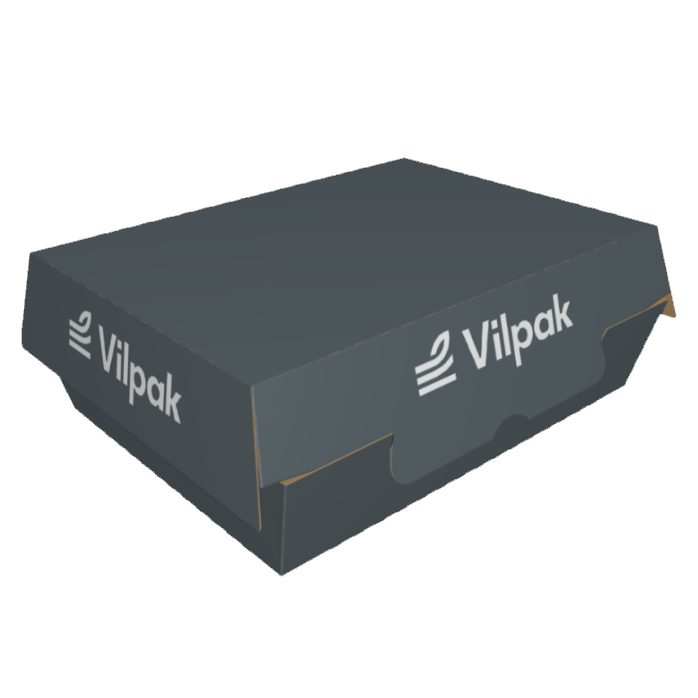
Conical solid board boxes, trays and items of the sort are a natural paper-based alternative to plastic packaging.
Ideal for fast-food, take-away and many other food-containing needs, they’re also increasingly used as a convenient option for an eye-catching packaging of non-food items as well.
VILPAK’s advanced production technology includes a modern Heiber + Schröder High-Speed Carton Erecting Machine capable of producing any type of ready-meal trays. Some features:
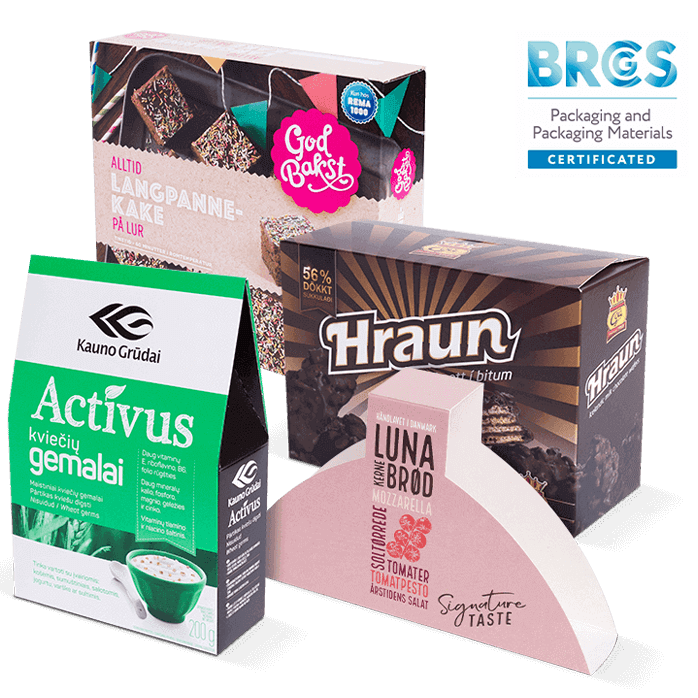
VILPAK has the experience, technology, proven processes and certifications such as BRC and ISO 9001, needed for the production of safe and high-quality packaging for food products. Top international clients vouch for our work. Conical solid board boxes, trays and items of the sort are a natural paper-based alternative to plastic packaging. Ideal for fast-food, take-away and many other food-containing needs, they’re also increasingly used as a convenient option for an eye-catching packaging of non-food items as well.
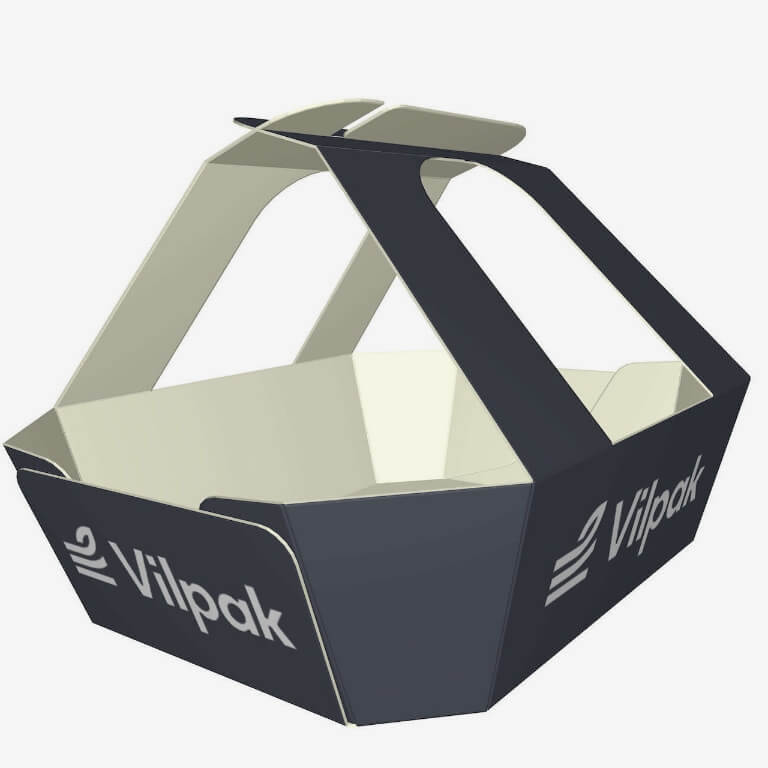
We adapted the latest technology for advanced conical packaging solutions for fruits and vegetables. VILPAK’s advanced production technology includes a modern Heiber + Schröder High-Speed Carton Erecting Machine capable of producing any type of ready-meal trays.
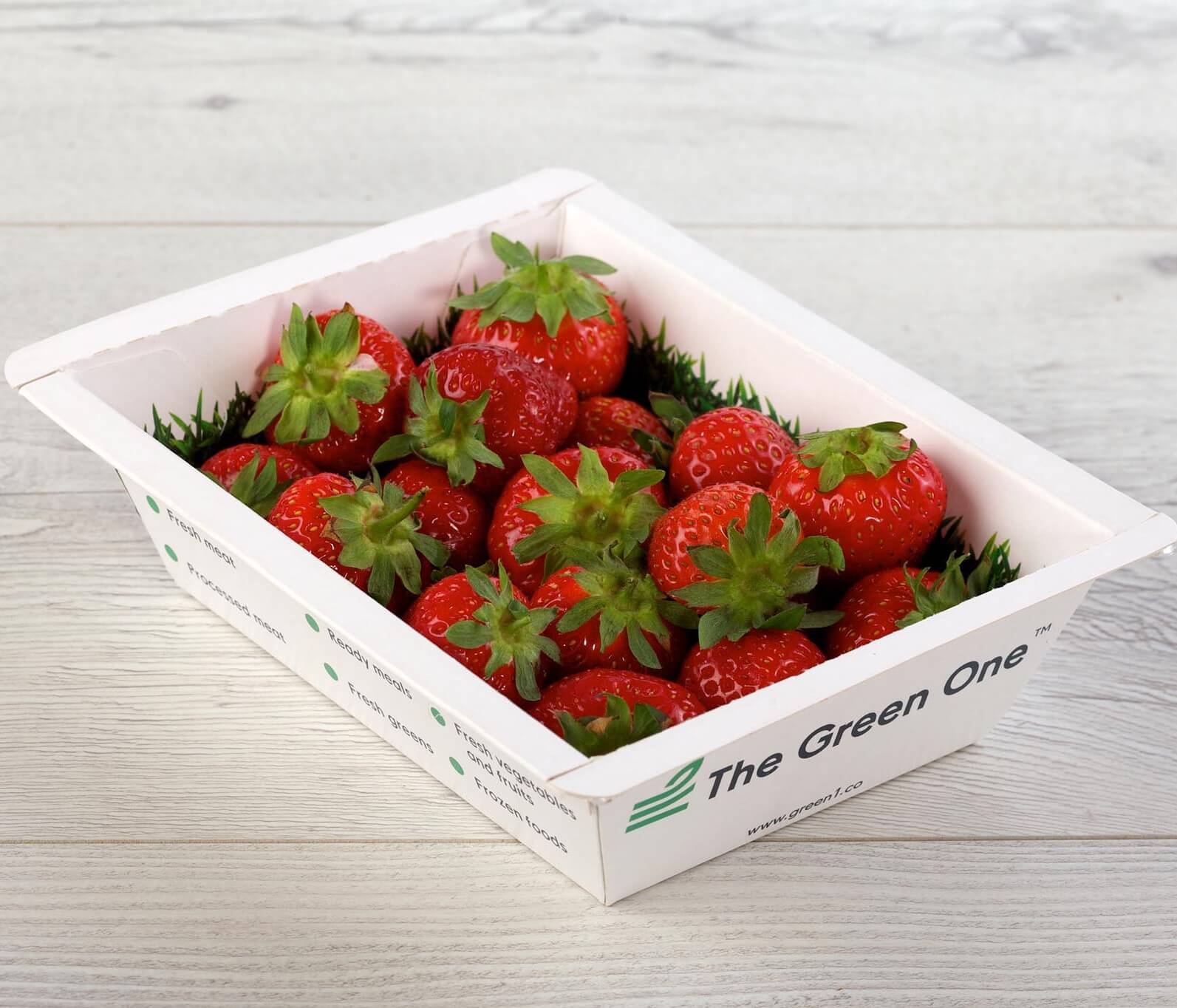
HALOPACK® is an innovative solution for food producers that not only ensures smooth technological transition from plastic trays but also creates new opportunities: the surface is 360° printable, it’s easily recyclable and perfectly suited for automatic packing lines.
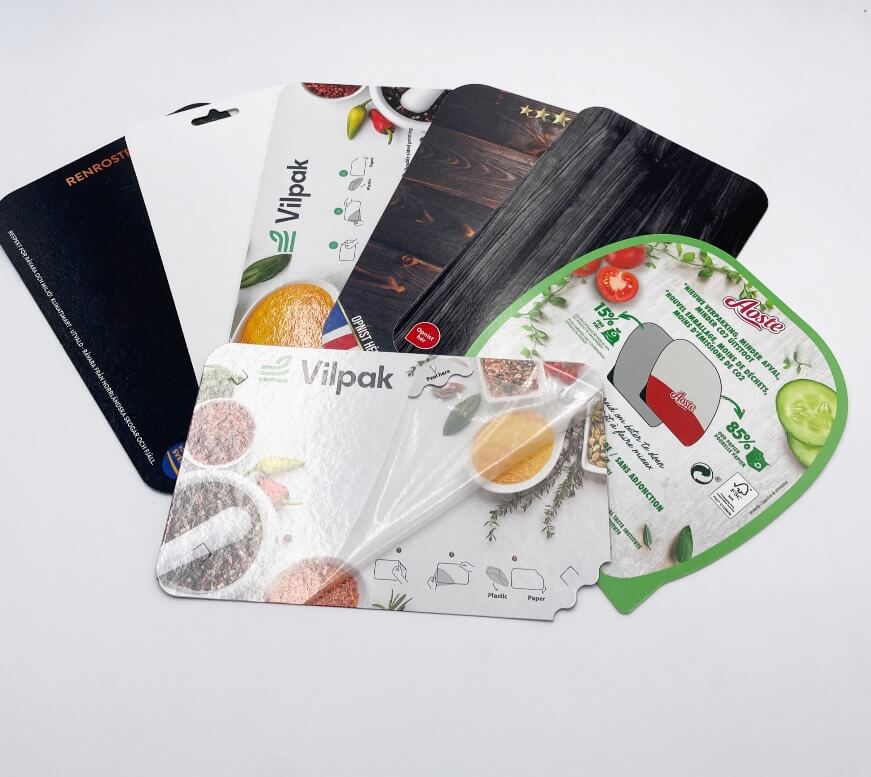
SKINPAD is made from cardboard pad with a thin layer of PE barrier which is printed on both sides. For this type of packaging, the marketing appeal is strong and does not require any additional sleeve to make it more appealing to the end-user, and thus reduces the secondary packaging waste for marketing purposes
Skinpad is designed for vacuum skin packaging and ensures highest absorbing performance with reduced material thickness, facilitating the opening of the package and preserving the packaging from breakage and tearing.
Sustainable packaging is important because it diminishes the ecological footprint in all the product’s life-cycle steps. It supports both producers and consumers to reduce their environmental impact.
| Primary packaging | Secondary packaging | Tertiary packaging | ||||||
|---|---|---|---|---|---|---|---|---|
| Material | Details of material | Weight | Material | Details of material | Weight | Material | Details of material | Weight |
| Glass | Brown glass | Paper | Paperboard FSC/PEFC | Paper | Cardboard packaging | 198 tonne | ||
| Plastic | PET | Wood | 383 tonne | |||||
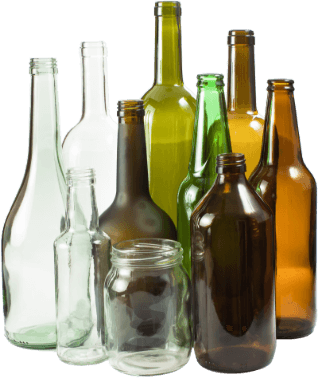
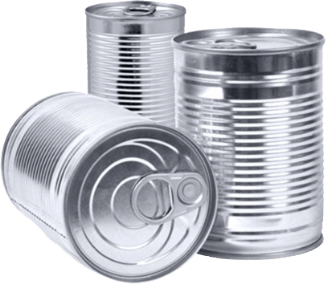
(packaging made up of more than one type of material that are not separable physically)
Examples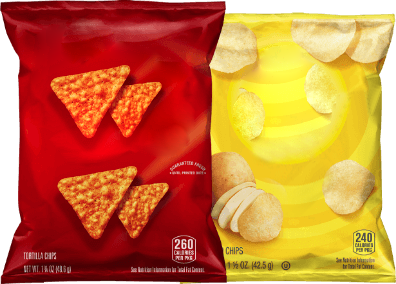
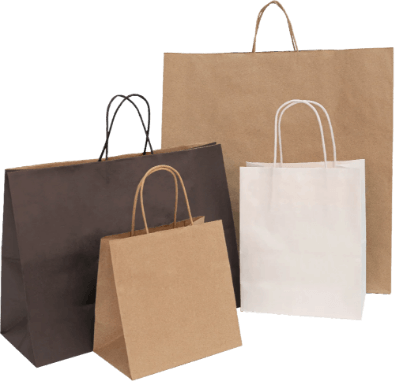
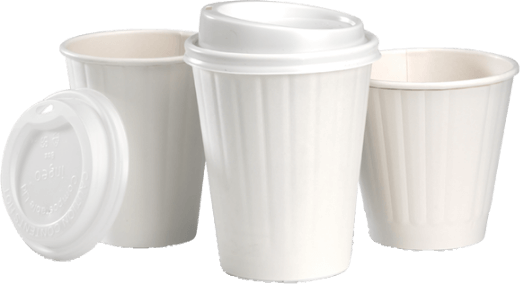
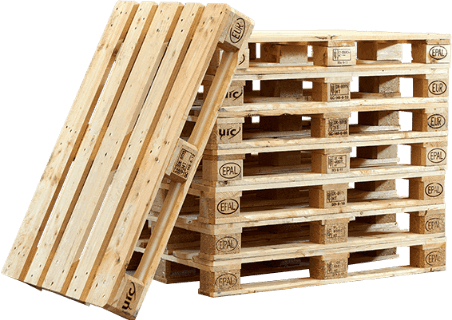
Our customers are leading manufacturing companies offering a wide range of products. These industry leaders have already shown appreciation for our commitment to the environment and for offering customers sustainable packaging solutions. The vast majority of the company’s production is served in the industries of commercial and professional services, manufacturing, food, beverages, and tobacco. The more detailed split of industries served, and sales to those industries in 2021, is indicated in the table and chart below.
| Industry served | Sum of total sales 2021, Eur | Sum of % of total sales |
|---|---|---|
| Commercial and professional services (Intermediate) | 4 826 960 | 36.7% |
| Manufacturing | 4 735 974 | 36.0% |
| Food, beverage, and tobacco | 2 896 047 | 22.0% |
| Food and staples retailing | 380 778 | 2.9% |
| Materials | 152 467 | 1.2% |
| Retailing | 102 054 | 0.8% |
| Household and personal products | 30 068 | 0.2% |
| Services | 10 980 | 0.1% |
| Pharmaceuticals, biotechnology, and life sciences | 8 026 | 0.1% |
| Total | 13 143 354 | 100% |
The Company mainly operates on a long-term contracts basis and values business relationships with its customers based on mutual trust, professionalism, and future-thinking. This results in the vast majority of contracts being conducted on the long-term with little to none being conducted as one-time orders. The Company manages its client portfolio by diversification – no one client makes up more than 10% from the total revenue pool. This is also illustrated by the table and chart below.
| Customers | Sum of % from total sales 2021 |
|---|---|
| Customer 1 | 9% |
| Customer 2 | 3% |
| Customer 3 | 7% |
| Customer 4 | 6% |
| Customer 5 | 5% |
| Customer 6 | 4% |
| Customer 7 | 4% |
| Customer 8 | 4% |
| Customer 9 | 3% |
| Customer 10 | 3% |
| other | 53% |
| Total | 100% |
Over the years, we have expanded our operations and today the majority of Vilpak‘s clients operating on an international basis; with 44% of sales undertaken locally. The main geographic areas being served is concentrated in Western Europe, Scandinavia, and the Baltic States.
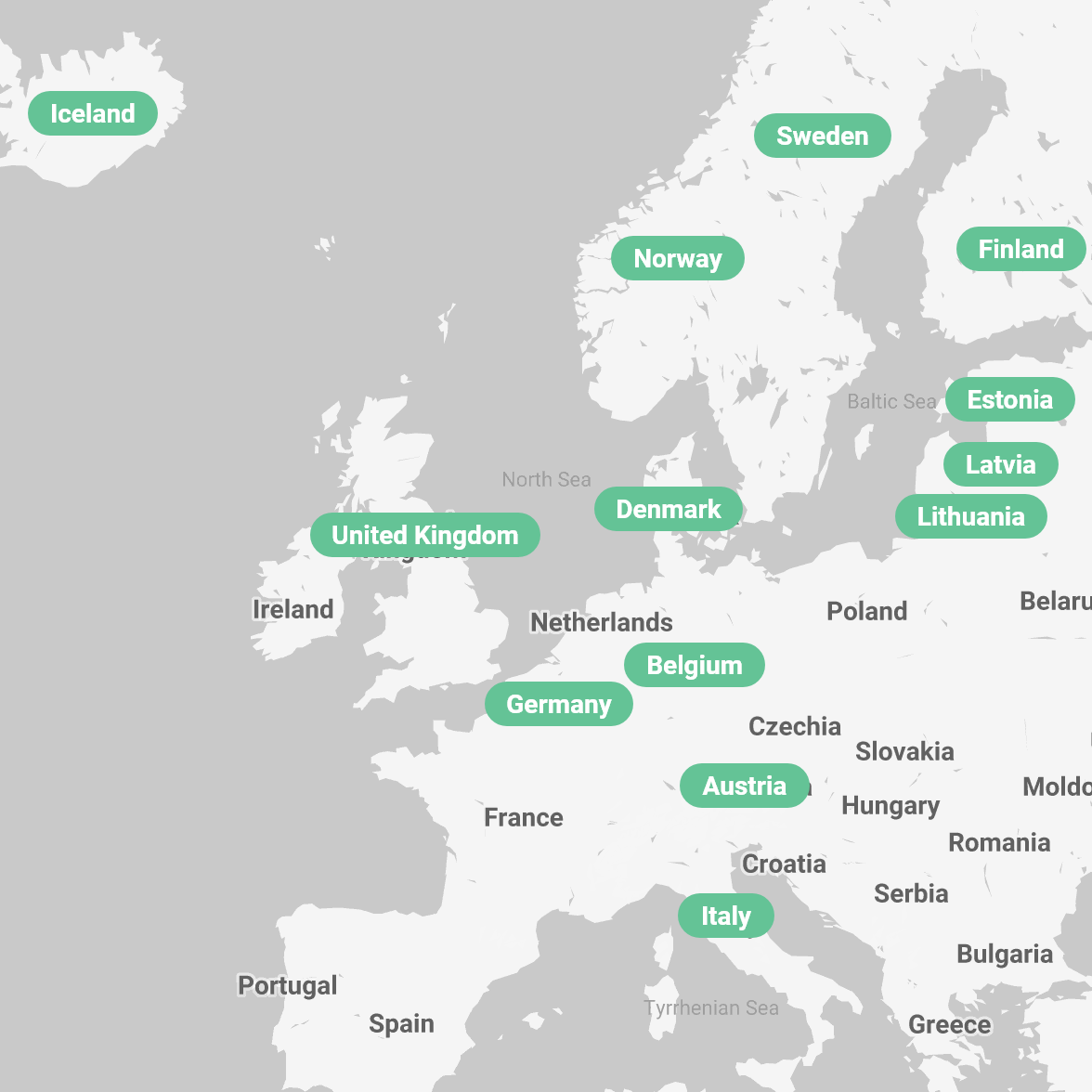
| Country | Sum of total sales 2021, Eur | Sum of % of total sales |
|---|---|---|
| Austria | 92K | 1% |
| Belgium | 120K | 1% |
| Denmark | 759K | 6% |
| Estonia | 279K | 2% |
| Finland | 66K | 1% |
| Germany | 227K | 2% |
| Iceland | 158K | 1% |
| Italy | 83K | 1% |
| Latvia | 177K | 1% |
| Lithuania | 5,733K | 43% |
| Netherlands | 3,180K | 23% |
| Norway | 226K | 2% |
| Other | 277K | 2% |
| Sweden | 1,652K | 13% |
| United Kingdom | 113K | 1% |
| Total | 13.143K | 100% |
We aim to take over the market share from plastic packaging manufacturers by offering customers sustainable cardboard packaging from recyclable, or easily recyclable materials. We are looking for ways to reduce the size of composite packaging in the marketplace using innovative materials.
Together with our customers, we are improving packaging with the end goal of increasing the amount of packaging using less, or the same amount of recyclable or environmentally friendly materials. We help find solutions by reducing the amount of secondary or tertiary packaging, moving functionality to primary packaging, or reducing the physical burden on employees when packaging products. Thus, the path of packaging development and production is shortened, less time is spent preparing for work and approving work with the customer.
One of the means through which Vilpak managed to achieve almost double growth in size in the last 5 years is through significant investments in technologies that support renewable energy use, are energy efficient, help to reduce manual labor, and help to scale up production through the digitization processes.
In 2021, Vilpak has invested a total of EUR 1,5 mil in such technologies. While evaluating the adequacy of the investments, Vilpak is evaluating compliance with ESG/Climate criteria and its return on investments.
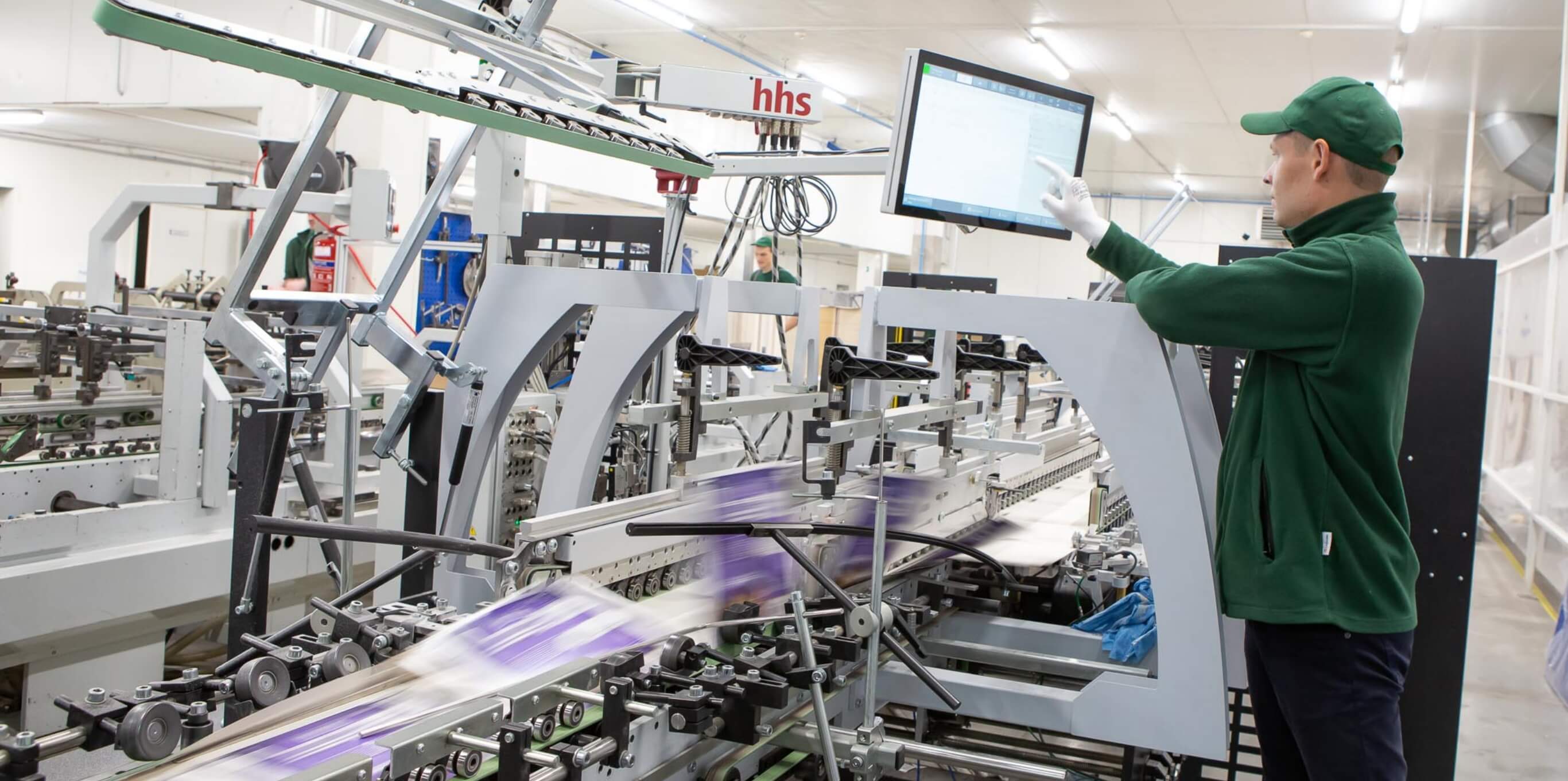
Vilpak utilizes different types of suppliers in order to fullfill our customers‘ needs. Being a production company, suppliers to Vilpak are as follows:
In 2021, Vilpak strengthened the focus on sustainability; thoroughly embedding sustainability as part of our overall business strategy and incorporated into the company’s long-term business objectives and investment plans, risk assessment, action plans, and processes. During the last year, the company held sustainability strategy development sessions with the participation of Vilpak top management teams.
For us, sustainable entrepreneurship and profitable growth go hand in hand. In all of our packaging services our aim is to increase process efficiency, save resources, and minimize emissions.
We believe that it is important to be aware of the impact generated throughout the value chain and to properly respond to the opportunities and demands of our customers, suppliers, end-users and to the challenges in the market. Assessment on risk and opportunities has been conducted where we identify risks and opportunities to offer the best response by adapting to change.
Stakeholder analysis and engagement is crucial to ensure that identified social, environmental, economic impacts, and governance management of each organization is conducted in an appropriate manner and creates value for stakeholders. To ensure this we’ve taken three steps:
Stakeholder identification. All stakeholders with whom the company interacts are identified.
Identification of key stakeholders. Key stakeholders are identified and assessed by their power and interest.
Engagement with stakeholders. The stakeholder’s engagement plan is confirmed, summarizing the information available on key stakeholder’s expectations, interests, and identified ways of engagement.
A Double Materiality Assessment is a process to help identify the most important sustainability topics, opportunities, and risks for Vilpak’s business according to two criteria: impact on stakeholders (society) and significance of economic, environmental and social impacts - importance to Vilpak. The stakeholder and Double Materiality Assessment identified and prioritized 15 Companies’ sustainability topics that matter the most for Vilpak and its stakeholders.
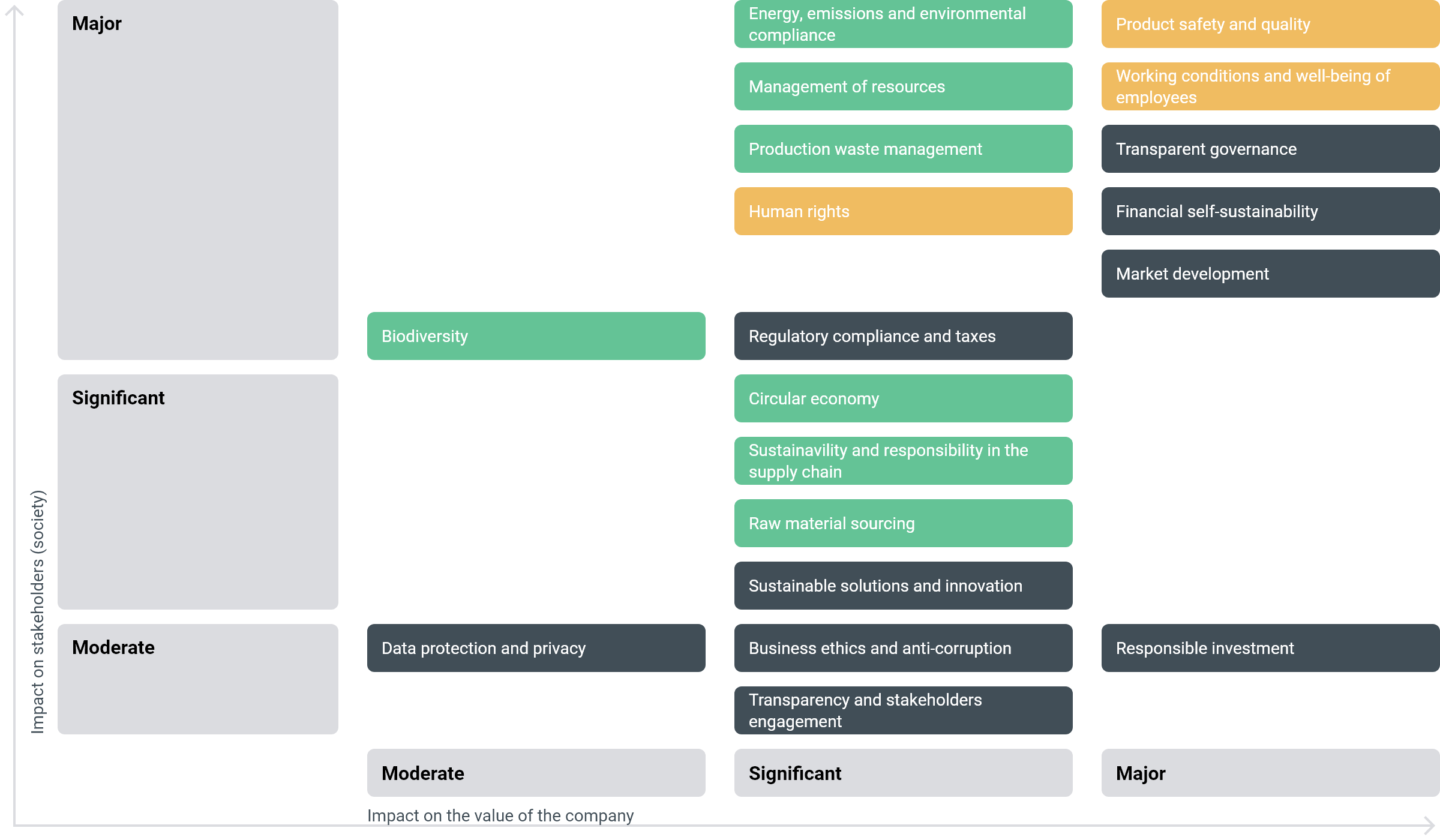
Pathway for climate resilience and more sustainable way for future generations
Climate change is one of the greatest challenges of our time, and only proactive actions towards emissions reduction are the path to a healthier environment and stronger business performance.
In 2021 the carbon emissions (Scope 1 and Scope 2) accounted for 2% of overall company emissions. The emissions of our value chain (Scope 3) make up 98% of all our fossil-based carbon dioxide emissions. Therefore, the value chain plays a significant role in the overall reduction of CO2 emissions.
The company focuses on the monitoring, efficient and effective management of natural resources. Natural resources pose an operational and reputational risk for all companies in all sectors.
An understanding of the resource landscape and an awarness of the risks and opportunities stemming from natural resources is the one of top priorities of our business agenda.
Waste management at our company involves the regular collection, transportation as well as processing and recycling or disposal and monitoring of different types of waste materials.
Disposing of waste in a responsible, safe and ethical manner is extremely important when it comes to waste management.
Health and safety - is a main priority for the entire company.We seek to promote the health and well-being of our employees and sustain their ability to perform over the long term, all of which necessitates a safe workplace.
Our company is committed to follow legal occupational safety and health regulations and create a hazard-free workplace. We have processes and procedures required to meet the legal requirements.
On the occasion of the employee’s wedding, the employee is granted 2 calendar days of paid leave.
Upon the death of the employee’s father, mother, spouse (partner), child (adopted child), brother, sister, grandmother and grandfather, the employee is granted 2 calendar days of paid leave.
From the first day of work, all company employees are insured against accidents. The insurance is valid not only during working days but all the time in Lithuania and abroad. Therefore, even during the holidays, our employees can feel safe.
Employee competencies and knowledge are important areas in which we constantly invest. We regularly organize various additional pieces of training for improvement, and development of new skills.
Each member of our team celebrating their anniversary (20, 30, 40, 50, 60, 70 years) receives a gift.
Each member of our team receives a special gift for uninterrupted work in the company (3, 5, 10, 15, 20, 25 years).
We strive to have a strong sense of good corporate citizen spread throughout the company. We look for and listen to expectations and demands of our society and most vulnerable groups, and have them reflected in our business operations and social contribution activities with a view to helping offering solutions to problems of the society.
We collect materials and donations for families who have lost their homes in fires, hurricanes, or other natural disasters.
We organized a river clean up project and started a tree planting activity in our area.
With our approach that product safety and quality must cover every aspect of a product's life cycle starts from design to disposal, and we are both proactive and reactive around any risk that can emerge.
We design with a holistic approach to protect our customers, end-users and our planet, and then we closely monitor customer's feedback to immediately identify and address any potential risks – and to continuously improve our products and services.
Keep the company’s values in line with those of society at large.
The Company‘s main governing body, and one of its key stakeholders, are its shareholders. The ultimate strategy and sustainability goals, as well as priorities, are set and approved by representatives of the shareholders.
The CEO of the Company is its main operational governing body appointed by the shareholders. The CEO is also the Chair of the Company‘s management team, consisting of heads of all main departments: production, supply, HR, sales, prepress, finance, and administration.
We perform duties honestly and in accordance with moral principles and responsible business practices
Make goals of achieving them visible to all affected by the business
Follow regulations and rules to remain within the law and demonstrate social responsibility
Treat all stakeholders fairly and equitably
Minimize conflicts and conflicts of interest

The management team with the help of the sustainability projects manager maintains oversight of all sustainability risks. Standard procedures help ensure that appropriate mitigations are in place and regularly reviewed by management. The Company’s purpose, value statement, strategies, policies, and goals related to sustainable development are reviewed periodically, but not less than every two years. This is done mainly through strategy sessions involving the whole management team as well as representatives of the shareholders.
We play an active role in several associations where we serve as members: ECMA (The European Carton Makers Association), LISPA (Association of Lithuanian printing industries), Clear Wave (Collective action initiative to promote business integrity and transparency).

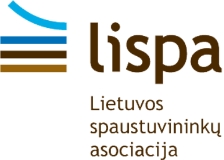
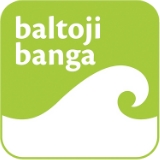
Vilpak pays the utmost attention to its financial performance and uses a number of key metrics to monitor and evaluate this performance. The main task is to be financially self-sustainable and ensure viable supported growth.
One of the key metrics aiding the above task is EBITDA profitability, a figure which reached 5% in 2021. The profitability was very much affected by the global COVID-19 pandemic which influenced rapid growth in the price of raw materials as well as an increase in transportation costs. The global shortage of resources continued past 2021, however, it is much leveraged and markets appear to be adapting to the new challenges, including Vilpak’s own performance.
Vilpak has achieved significant growth in the past 5 years, almost doubling its turnover (from net turnover of EUR 7 mil in 2017 to EUR 13 mil in 2021), which in any normal circumstances places pressure on working capital resources. In order to maintain sustainable growth, Vilpak pays much attention to monitoring its working capital composition, change, and ratios. The monitoring is conducted on a daily basis and is discussed among management in order to determine if any action needs to be taken. Due to such close monitoring and actions taken, Vilpak has managed to reduce its working capital by EUR 587 k and to achieve a ratio of 11% working capital from net turnover. Effectiveness in also key for a sustainable business development. As a result, Vilpak monitors its efficiency levels, keeps track of any changes, and has established key performance indicators for valuation of such efficiency. Efficiency by Vilpak is calculated as throughput divided by the operating expenses ratio. The higher the ratio, the better Vilpak’s performance. In 2021 the company managed to reach a ratio of 1.19. This was done via several strategies, such as investments in more effective machinery, reducing the volume of production waste, reducing unnecessary operational expenses, and attracting new clients. The ratio is measured at least once every month and communicated to management. The quarterly ratio is also communicated to all employees through the company’s quarterly management report. Additionally, Vilpak monitors its cash-flow management through selecting the main criteria for upkeeping a healthy cash flow: absence of debts that are overdue more than 30 days, timely payments to suppliers (no later than 14 days past due term), bank financing used to ensure a healthy and sustainable cash flow. In 2021 Vilpak had a goal to keep no more than EUR 1,4 mil in the form of raw materials in an attempt to reduce overstocking. All the above indicated key metrics help Vilpak ensure the risks related to unbalanced growth are mitigated and sustainable financial performance is ensured.
| Key financial figures | 2020 | 2021 |
|---|---|---|
| Turnover capital ratio, % | 15% | 11% |
| Total income | 13 726 313 | 13 143 353 |
| Profit/(loss) before tax | 467 315 | -139 380 |
| Operating profit before amortisation and impairment (EBITDA) | 971 277 | 701 067 |
| Operating profit (EBIT) | 495 484 | -109 187 |
| Inventory turnover, days | 73 | 73 |
| Efficiency ratio, Eur | 1.41 | 1.19 |
| EBITDA profitability, % | 7% | 5% |
We have several management systems in place helping to streamline our business processes and build-in efficiency.
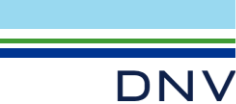
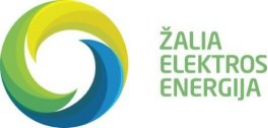
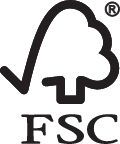


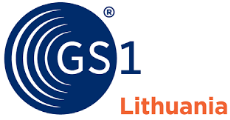
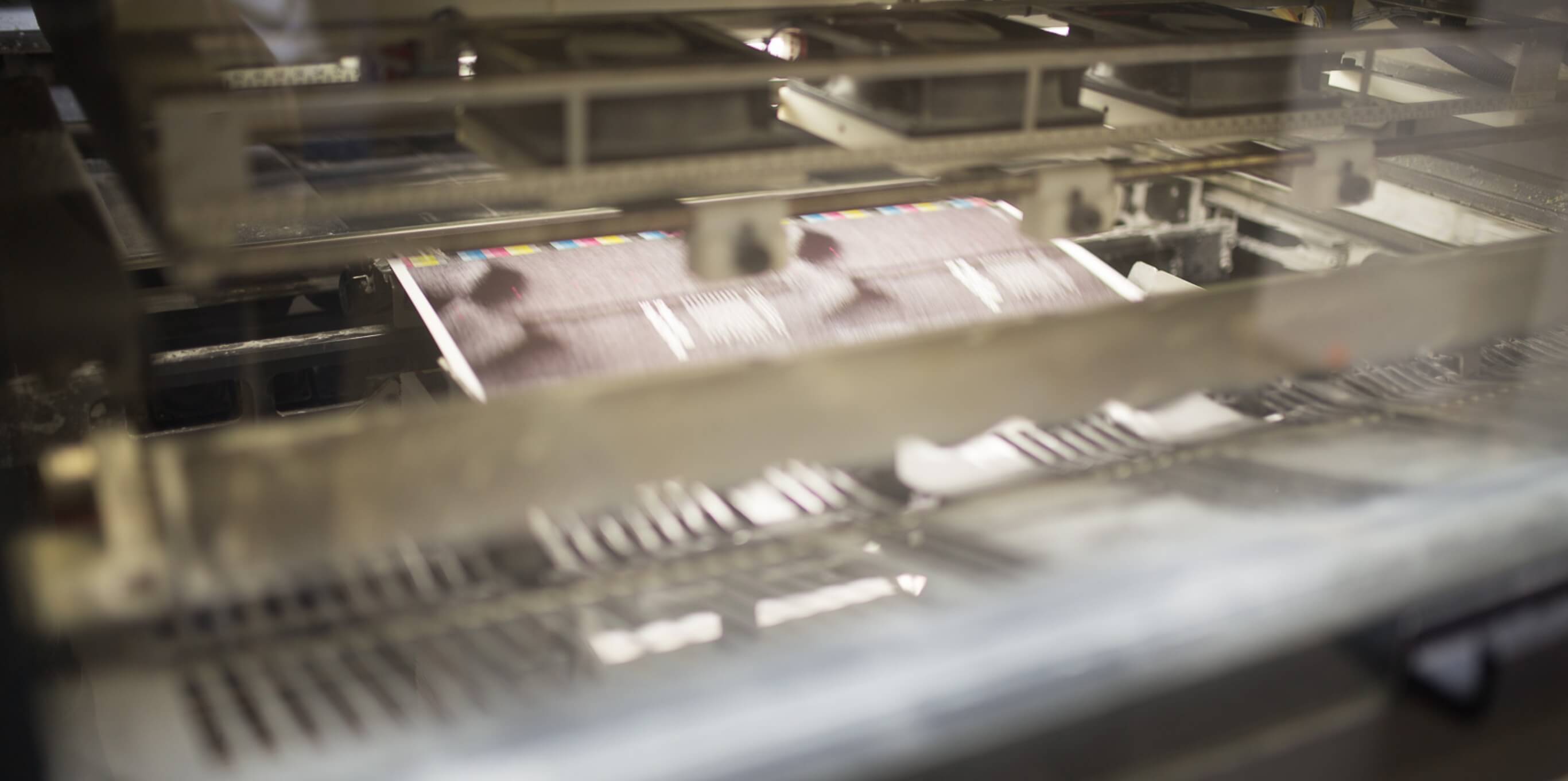
Ensuring the protection of our information and systems and that of our customers and other stakeholders is of critical importance. We have stringent protocols and practices addressing both cybersecurity and data privacy.Understanding and implementation of data privacy is based on EU legislation, in particular European Union General Data Protection Regulation (EU GDPR). Ensuring IT security we maintain organizational, process-related and technical information security countermeasures based on recognized international standards.
We manage and maintain technical and organizational security measures to protect data against accidental or intensional destruction, manipulation, loss or access by unauthorised parties.
Affordable and clean energy
Climate action
Responsible consumption and production
Good health and well-being
Reduced inequalities
Decent work and economic growth
Industry innovation and infrastructure
Peace, justice and strong institutions
We believe that it is important to be aware of the impact generated throughout the value chain and to properly respond to the opportunities and demands of our customers, suppliers, end-users and to the challenges in the market.
As the climate crisis continues, the regulatory response will shift towards reduction of greenhouse gas emissions and environmental regulation will significantly tighten. Environmental impact will become the key regulatory factor across all industries. This will lead to some businesses being forced to change the way they operate: processes, new sustainable products, production technologies, etc. This may result in changes to the pricing of energy and lead to the increase of costs in production. Protection of forests to secure biodiversity limits harvesting volumes. LULUCF regulation highlighting that forests - in particular primary forests - are significant natural carbon sinks.
Vilpak shifted to the use only renewable fossil-free electricity in its production processes. Vilpak uses raw material resources efficiently to avoid waste in production.
Changes in the supply and prices of cardboard in the markets may have a negative impact on the company’s revenue, profit, and cash flows.
Risks and opportunities Source Management Product sales Changes in the supply and prices of cardboard in the markets may have a negative impact on the company’s revenue, profit, and cash flows. Search for new markets. Cooperation with business partners.
Constantly growing consumption around the world is depleting resources and driving higher waste levels. The environmental impact of packaging is related to the extraction of raw materials, production, and waste management. The functional properties, weight and design of the packaging, become particularly important.
Produce only packaging made from environmentally friendly raw materials that are easy to recycle, safe, and made from recycled materials. Ensure that it does not contain hazardous or toxic chemicals.
Consumers prefer easily recyclable packaging made from renewable raw materials that do not contain fossil fuels.
Cardboard used in production is recycled and / or composted, and the fact that electricity is produced using only renewable energy sources helps to reduce the amount of carbon dioxide generated during packaging production. Good packaging design further reduces the environmental impact of cardboard packaging.
Employee retention and minimization of turnover._x000D_Qualification and integration of employees into production work processes.
The company focuses on building employee engagement in participation and decision-making, maintaining good relations, turning feedback into actions, and providing opportunities to improve. Social recognition and monetary rewards are on board._x000D_The company has an employee performance appraisal and training system. Vilpak strives to ensure an exceptional onboarding experience._x000D_Training is organized both internally and by third party.
Existing and potentially dangerous risk factors (biological, chemical, physical) have been identified along with favorable conditions for their emergence and increase have been analyzed. Risk evaluation consists of an assessment of the likelihood of the risk factor occurring and the severity of the consequences. The risk assessment covers the entire production chain of packaging, from the purchase of raw materials to delivery to the customer.
Risk management plan in place. Identified critical control points according to the Production Flowchart._x000D_Existing and potentially dangerous risk factors (biological, chemical, physical) have been identified and favorable conditions for their emergence and increase have been analyzed. Risk evaluation consists of an assessment of the likelihood of the risk factor occurring and the severity of the consequences, management measures and actions specified. The risk assessment covers the entire production chain of packaging, from the purchase of raw materials to delivery to the customer.
Significant changes in raw material supply in global markets. Significant rise in raw material prices. Competition
Diversifying the procurement of key raw materials from different suppliers in the European Union.
We consume a lot of electricity and natural gas in the company’s operations. All operation of production equipment is based on the use of electricity, which poses a risk of interrupted supply of electricity. The supply of electricity influences the course of all production processes.
Electricity is supplied on contractual terms. Distribution is provided by the Energy Distribution Operator. We have installed 500 kW solar panels on site. Natural gas is used for heating and hot water. Planned investments in heat recovery systems will help reduce natural gas consumption.
Workplace Environment; electrical safety handling and maintaining electrically powered equipment; safe behavior near/with potentially hazardous equipment; identification of potentially hazardous agents; minimum safety and health requirements for the use of work equipment; fire prevention and extinguishing; activities of other companies providing services on the site.
Occupational safety audits are performed on a regular basis. Workplaces and work equipment are technically maintained. Deficiencies that may affect the safety and health of employees are addressed. Work equipment is clearly visible, identifiable, and marked. Employees receive the necessary training in the workplace, are instructed accordingly, and are aware of the potential hazards. Fire extinguishers and fire safety engineering systems are maintained, labeled and easily accessible.
Vilpak management team performed an analysis of the Company’s stakeholders, the results of which allowed to determine issues and expectations, relevant to stakeholders, and accordingly helped the company to identify materiality topics and strategic targets. For Vilpak, the goal of stakeholder analysis was to develop a strategic view of the human and organizational landscape, the relationships between the different stakeholders, and the topics that they care about most. Stakeholders are hugely important, as they make a significant impact on business decisions and performance, both directly and indirectly, through their roles as buyers, suppliers, partners, employees, investors, and so on.
We believe that the relationships with Stakeholders will help us to advance towards our long-term commitments and objectives. This way, we will be able to focus on responding to the challenges faced by society today, thus, providing innovative and sustainable solutions and generating long-term value for all parties involved.
By entering into dialogue with different groups, we, as a Company, can gain insight into internal and external points of view. Vilpak aknowledges stakeholders as participants in co-creating value for the organization. We communicate regularly with our stakeholders discussing the topics, that may be of significant interest or impact to them; including our performance, decisions and activities in relation to environmental, social, and economic (governance) issues.
Top management members have been involved to evaluate the topics’ relevance for Vilpak’s core business. Double Materiality Assessment has been performed involving several vital stages:
Defined the purpose of company’s Double Materiality Assessment by delivering risk-assessment and Sector analysis;
Identified potentially relevant topics. According to various sources, a list of potentially relevant topics have been assessed that may have actual and potential Environmental, Social, and Governance (ESG) impacts on Vilpak business and its stakeholders. Sources used: results from stakeholder mapping and involvement, prevailing market trends, EU regulations and directives, Vilpak‘s strategy, organizational culture, and overall context of sustainability.
Prioritization of material topics relevant to both Vilpak's business and key stakeholders. Key sustainability issues and relative importance of specific ESG topics have been identified by assessing each potentially relevant material topic and evaluating its impact on the business and stakeholders.
The insights gained through this process can support decisions about the direction of the business and guide the relevant strategy, help identify trends that could significantly impact the company’s ability to create value in the long-term, and have the greatest positive impact on the company and its stakeholders.
The assessment identified and prioritized 15 Companies’ key sustainability topics for Vilpak:
As a manufacturer, managing product safety and quality risks is paramount for Vilpak, from the resources we use to the production, sale, and distribution of products to the end-user. If the company management structure effectively facilitates safety at each step, it bolsters a culture of sustainability. Thus, Vilpak prioritizes safety and quality of products to deliver value exceeding customer expectations to fulfill its social responsibility.
Vilpak invests in the well-being and development of its employees, seeks to provide a healthy and safe work environment for employees by monitoring health and safety standards. All employees have performance plans and annual performance dialogues, including top management. An employee survey is conducted yearly to follow-up on employees satisfaction and well-being. Results are assessed to understand the changes, trends, and critical points of improvement identified.
Transparency is a fundamental component of good corporate governance and serves to build vital trusting relationships with key stakeholders. For Vilpak, environmental, social, and governance reporting are the company’s means of communication with stakeholders as part of our accountability and stewardship obligations, and at the same time, are a tool for achieving transparency regarding the financial performance of a company.
Financial self-sustainability is identified as a material topic because Vilpak is a profit-driven company that needs to make a profit to remain viable. Vilpak’s good economic performance contributes to society through the payment of wages, taxes, and the purchase of products and services. This impacts economic activity, society, and contributes to economic growth in order to manage impacts related to economic performance. Financial self-sustainability and long-term profitability ensure that Vilpak remains a reliable and value-adding partner for all its stakeholders.
Regulatory and public concerns around single-use packaging waste will force companies to improve the sustainability of their packaging and to rethink their packaging systems.There will be a significant impact on packaging converters and their value chain. However, for packaging converters with the right focus and innovation capabilities, the new landscape could offer significant growth and new partnership opportunities to support customers in revising their packaging solutions.Vilpak focuses on primary packaging solutions in the food industry and has a great opportunity to win a significant market share.
Vilpak strives for full legal and regulatory environmental compliance, which is the foundation of its business. Energy, emissions, and environmental compliance are identified as material topics in light of a global challenge to combat climate change. For Vilpak, electricity consumption is key, as the whole production process and all equipment is run on this form of energy. In our value chain, the major source of GHG emissions is from purchased raw material and transportation. To mitigate these impacts, Vilpak has transitioned to using electricity from 100% renewable energy sources in our operations.
In the production of our products, we depend on the long-term availability of key raw materials, energy, and water supplies. Our production processes are therefore aligned to protect these strategic resources whilst minimizing our environmental footprint.
Production waste management, strategic waste reduction, separation and management of waste streams.
Vilpak regards the practice of compliance as one of our highest priorities and implements fair and highly transparent corporate activities in accordance with corporate ethics, in addition to observing laws and regulations as well as social norms. Understand our compliance obligations and other incentives; develop strategies that optimize the impacts of carbon, climate change, and resource scarcity. We are committed to tax compliance.
Due to higher awareness and shifting demand towards more sustainable solutions among customers, transition to more responsible models of production that takes into account the principles of a circular economy - one of key topics in Vilpak's agenda. We seek to improve the efficiency of processes and the recovery of waste in order to benefit from it by encouraging its recycling.
It is one of the main topics for Vilpak; reflected in our Responsible Sourcing Procedure. The requirements apply to all purchasing categories and compliance is monitored as part of our governance, risk, and compliance framework.
Vilpak’s business relies on the availability of key raw materials to convert them to value-added finished products and solutions.
We have elevated sustainability in our business strategy, especially in relation to innovation, resulting in an increased focus in recyclability and environmentally sound products.
Vilpak promotes the protection of universally acknowledged human and labor rights. Vilpak assesses its own operations in relation to potential human rights violations and implements adequate measures to prevent any further violation.
Application of environmental, social and governance criteria to Vilpak's investments in operations.
We want to play our part to meet the requirements of the Paris Agreement, which aims to limit global warming to 1.5 degrees. Therefore, we are reducing our process-related emissions by improving our energy efficiency. In 2020 we signed our first power purchase agreement, purchasing 100% of our electricity requirements from renewable sources. In 2021 Vilpak generated and consumed 393 757 kWh electricity from installed 500 kW solar panels on site which accounts for around 22% of overall electricity consumption.
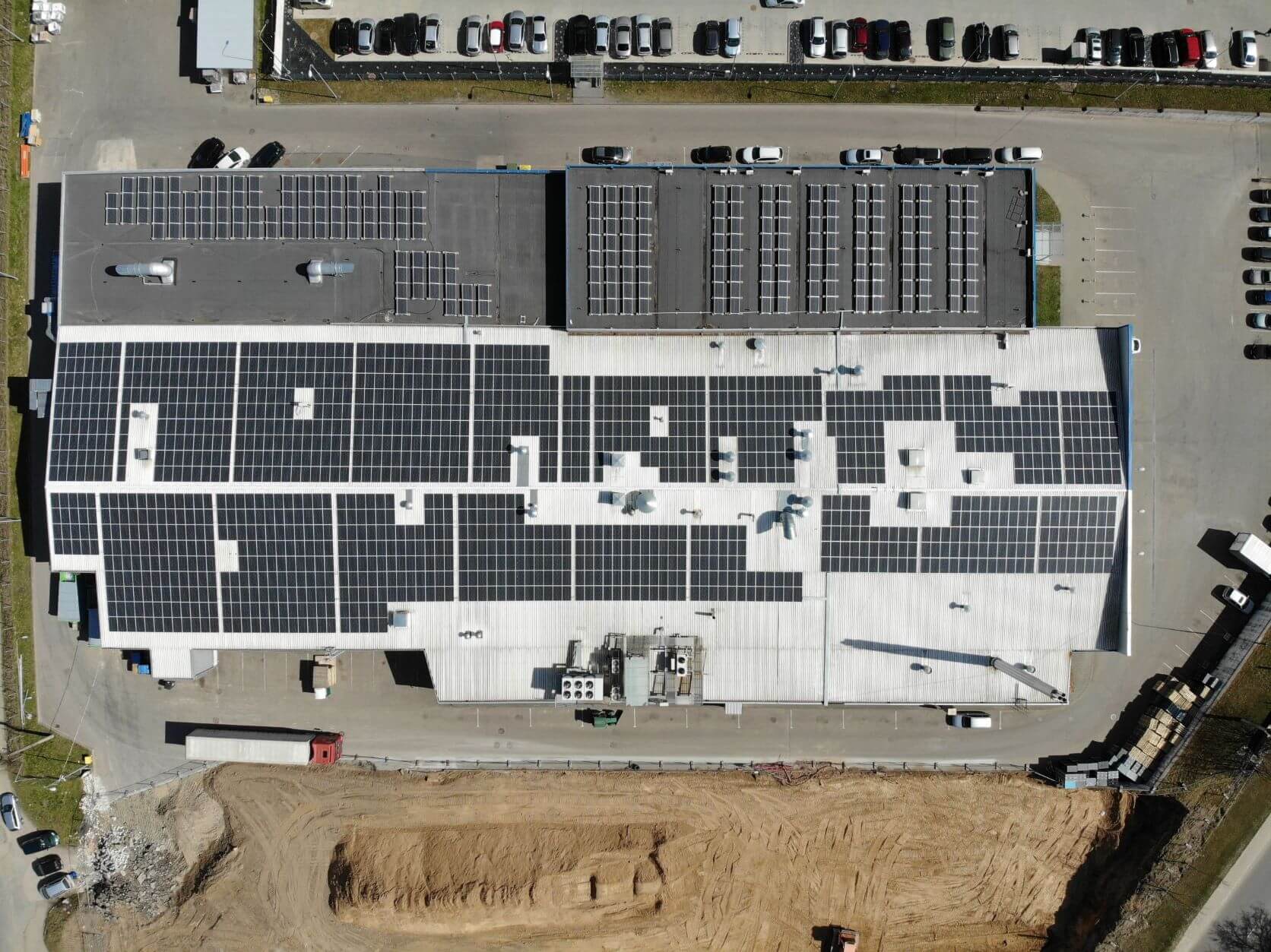
The emissions of our value chain (Scope 3) make up 98% of all our fossil-based carbon dioxide emissions. A significant portion of the emissions in our value chain is attributable to the purchase of key raw materials (cardboard, ink, varnish, plates and cylinders), along with the upstream and downstream transportation emissions involved. The reduction of these emissions is more challenging for us than the measures pertaining to our own operations.
Environmental compliance is a material topic for Vilpak operations, ensuring it maintains an Environmental Management System and conforms to ISO 14001 certification on site. Vilpak strives for full legal and regulatory compliance, which is a prerequisite and the foundation of its business. The Corporate Management System is maintained by the Quality & Standards department and audited by external parties as part of the ongoing ISO certification efforts. Internal audits and regular reviews of environmental performance are conducted in order to support the continuous improvement of the management system and its implementation. We understand that manufacturing processes may have a negative impact on the environment, particularly through emissions, landfill waste, etc. Our site is located in an industrial area and we are confident that our manufacturing site does not have a direct negative impact on biodiversity. Nonetheless, we are constantly monitoring our activities and working to improve our environmental performance. In 2021, no violations of environmental laws and regulations occurred on site.
In order to rize effectiveness of energy usage, Vilpak has invested in its own solar plant, which has already been discussed in greater detail in this report. The total energy produced in 2021 in the company’s solar power plant amounted to 393 MWh, while energy purchased was 1 417 MWh, this means that Vilpak currently produces around 22% of its total energy used. All of the energy bought externally by Vilpak is green energy only. Vilpak also pays great attention to minimizing the use of energy in its production plant, therefore, only energy efficient equipment is selected for new investments. The company uses a metric to evaluate the efficiency of its use of electric energy with the ratio of energy used, multiplied by sales income in EUR. This ratio in 2021 amounted to 0,14 kWh/Eur, meaning that it took 0,14 kWh of electric energy to make 1 EUR of income in 2021.
Gas is only used for premises and water heating purposes.. The use of gas amounted to 785 MWh in 2021. Vilpak is planning to invest EUR 110 k into equipment that will convert excess steam into heating, which should reduce the use of gas approximately twofold.
| Source | Total, MWh | % of total |
|---|---|---|
| Electricity | 1 417 | 54.6% |
| Own electricity produced | 393 | 15.1% |
| Natural gas | 785 | 30.3% |
| Total | 2 595 | 100% |
Water is also used in a production process, however, this is not significant, comparing to other resources, used by Vilpak. The company’s priority aim is to keep the use of water stable at the level of 1 895 m3 as in 2021. Wastewater is collected further by UAB “Vilniaus Vandenys”, i.e. the same company that is supplying water to Vilpak. The total amount of wastewater collected in 2021 is the same as the amount used – 1 895 m3.
Fuel in the form of LPG, petrol, gas, diesel, used for vehicles, is mainly used by the company’s sales team as well as its vehicles to deliver products to clients. The total volume of fuel used in all mentioned forms in 2021 amounted to 9 908 liters. In 2021 Vilpak used 9684 GJ of energy in its operations. At 68%, the use of electricity made up the bulk of consumption, natural gas ranked second in final energy consumption metrics.
| Source | Total, kJ | % of total |
|---|---|---|
| Electricity Consumption (from renewable energy sources) | 6 517 368 | 67.3% |
| Natural Gas Consumption | 2 824 484,4 | 29.2% |
| Petrol Consumption | 118 288,908 | 1.2% |
| Diesel Consumption | 217 282,605 | 2.2% |
| Liquefied Petroleum Gas (LPG) Consumption | 6 192,612 | 0.1% |
| Total | 9 683 616,525 | 100% |
Energy intensity, calculated based on the data of the last financial year, consumed fuel, electricity (both purchased and produced on site) and natural gas are included in the calculations.
Currently, the plan to invest in equipment to reduce the use of natural gas is the most relevant initiative by Vilpak in terms of energy savings. Further initiatives will be considered in plans for the coming year.
All of the company’s waste is collected by a waste management company and further recycled. Vilpak reports on its waste on a quarterly basis, in line with legal requirements. Also, management place an emphasis on the main carton waste as it directly influences the volume of production output – the technology team is in constant development of means to minimize the volume of carton waste whenever and wherever possible.
| Waste class | Total, tonnes | % of total |
|---|---|---|
| Plastic | 10,31 | 0.6% |
| Wood | 114,93 | 7.0% |
| Paper and Cardboard | 1 515,76 | 92.0% |
| Paper and Cardboard packaging | 7,29 | 0.4% |
| Total | 1 648,29 | 100% |
Landfill waste is collected from the territory of Vilpak by SĮ “Vilniaus Atliekų Sistemos Administratorius”. Waste is collected once every week and in 2021 a total of 179,23 m3 of waste was collected.
21 tonne of aluminum plates waste were collected and handled by scrap metal waste manager “Baltic Metal” for further recycling.
All generated waste is accounted for by the state electronic system “Unified Product, Packaging and Waste Accounting Information System” (GPAIS) and annual reports are provided.
We analyze the data on the generated waste and compare it with previous periods, while regularly looking for ways to improve the process. Contracts for the collection of waste generated during production and management concluded with the waste managers UAB Ekobazė and Všį Žaliasis Taškas. These companies collect all of the waste, generated in the production process, and certificates are issued at year end to prove, that this collected waste was treated (recycled and stored) in line with legal requirements. Information on all waste generated and disposed of, is entered into the GPAIS system, which is a mandatory system for the accounting of waste generation and disposal for Lithuanian production companies.
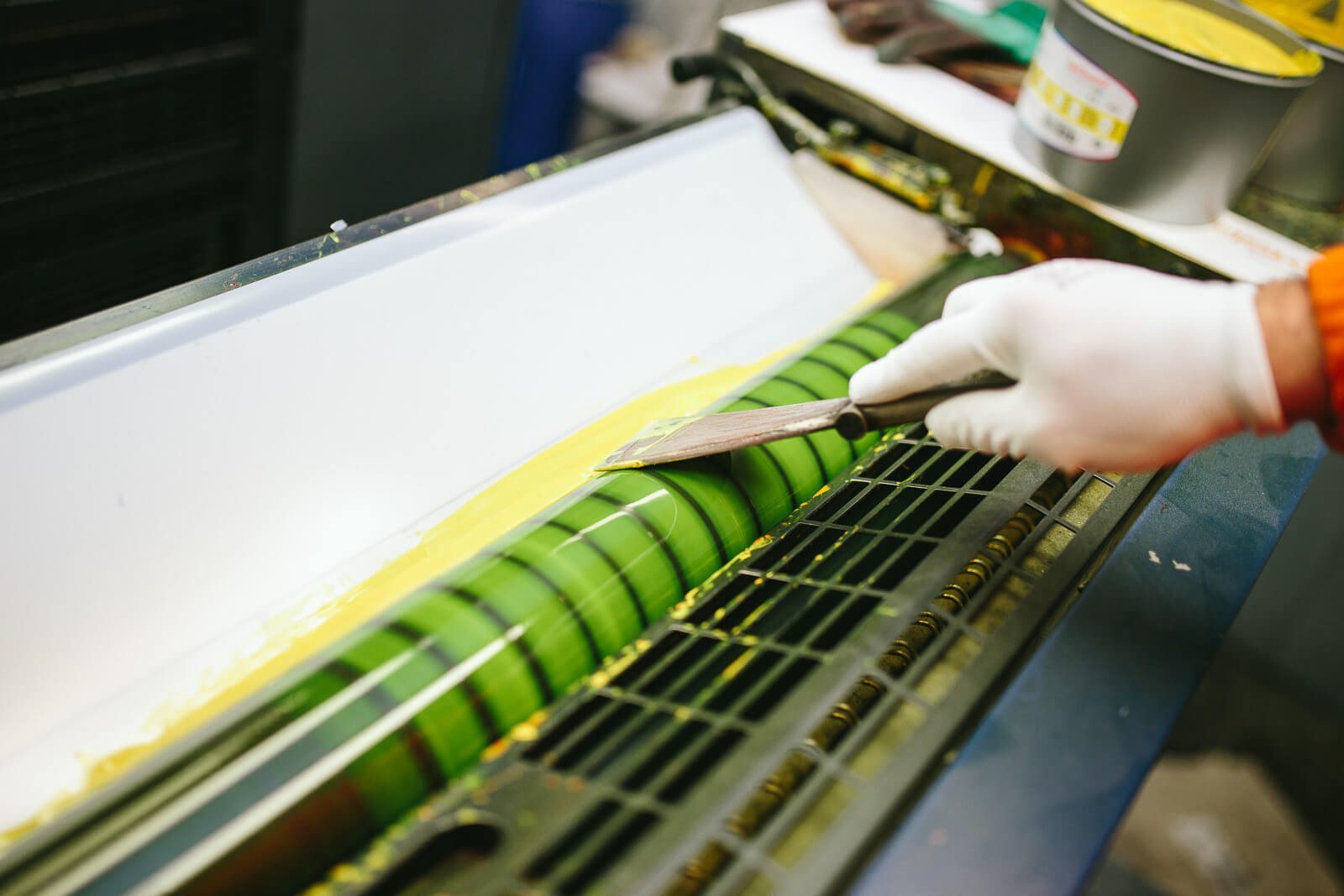
Hazardous waste management is outsourced at Vilpak and handled with a reliable and certified partner, the Center for Physical Sciences and Technology. In 2021 Vilpak generated:
We seek to perceive our employees needs and meet them, therefore regularly conduct employee surveys. In 2021, around 84 people (81%) took part and offered the conclusion that 61% of respondents are highly engaged with our company.
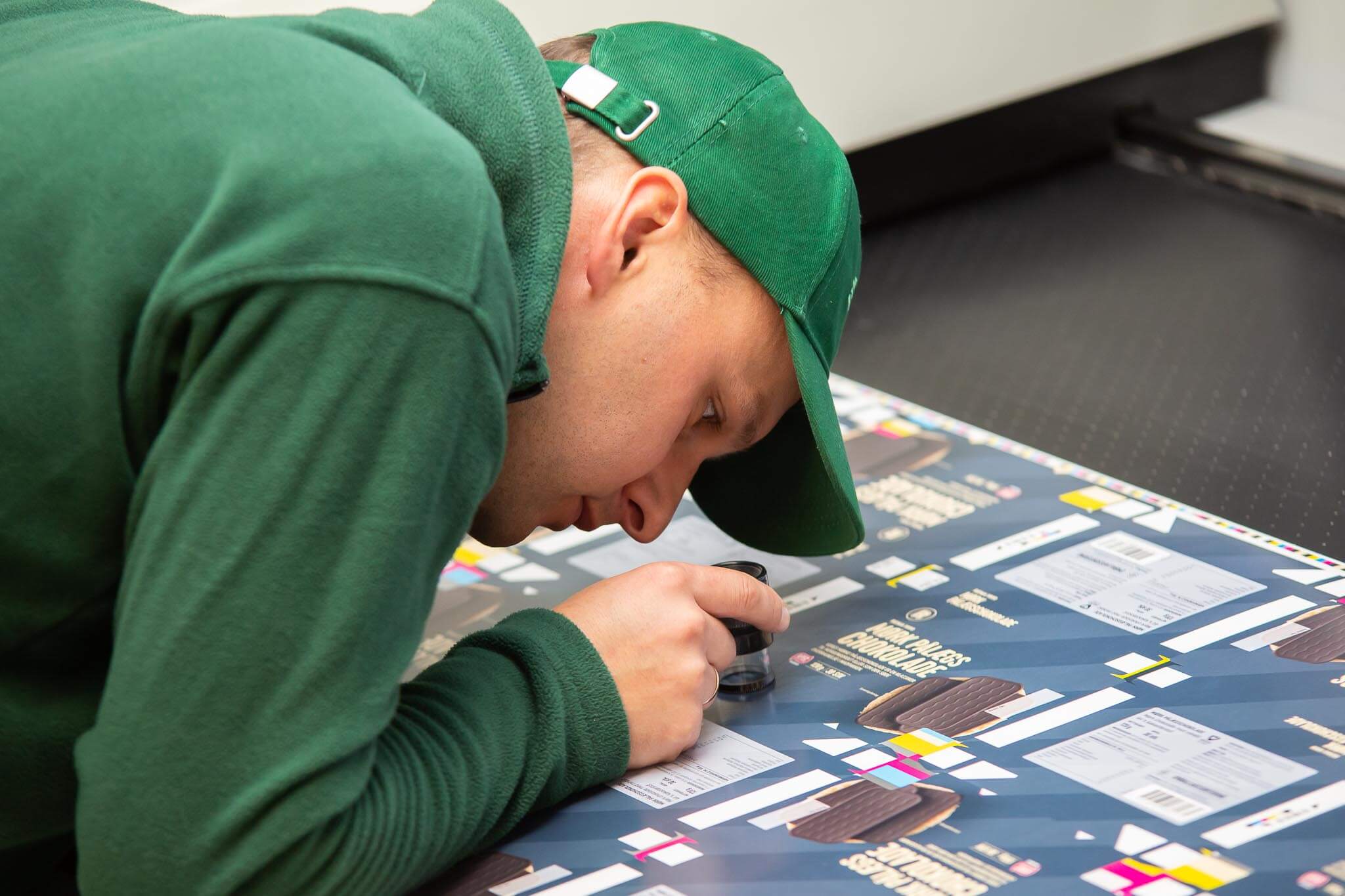
We understand the importance of balancing the demands of work and personal life to ensure a productive and motivated workforce. We focus on creating the best possible working conditions for our people. This includes physical, mental, and financial well-being. For employees we create working conditions to learn and grow together with the company.
| All employees | Women | Men | |||
|---|---|---|---|---|---|
| Total | Pcs. | 103 | |||
| By Gender | Pcs. | 43 | 60 | ||
| % | 42% | 58% | |||
| Employee category | Workers (40) | % | 68% | 32% | |
| Skilled workers (25) | 0% | 100% | |||
| Specialists (25) | 64% | 36% | |||
| Top managers (12) | 17% | 83% | |||
| Top level manager (1) | 0% | 100% | |||
| By Age Group | Under 30 years old | 30-50 years old | Over 50 years old | ||
| Employee category | Workers (40) | % | 37% | 27% | 36% |
| Skilled workers (25) | 41% | 55% | 4% | ||
| Specialists (25) | 44% | 56% | 0% | ||
| Top managers (12) | 8%% | 84% | 8% | ||
| Top level manager (1) | 0% | 100% | 0% | ||
| New Employee Hires | Women | Men | |||
|---|---|---|---|---|---|
| Total | Pcs. | 70 | |||
| By Gender | Pcs. | 30 | 40 | ||
| % | 43% | 57% | |||
| By Age Group | Under 30 years old | Pcs. | 9 | 21 | |
| % | 30% | 53% | |||
| 30-50 years old | Pcs. | 13 | 16 | ||
| % | 43% | 40% | |||
| Over 50 years old | Pcs. | 8 | 3 | ||
| % | 27% | 7% | |||
| Employee turnover | Women | Men | |||
|---|---|---|---|---|---|
| Total | Pcs. | 52 | |||
| By Gender | Pcs. | 20 | 32 | ||
| % | 38% | 62% | |||
| By Age Group | Under 30 years old | Pcs. | 7 | 20 | |
| % | 26% | 74% | |||
| 30-50 years old | Pcs. | 6 | 10 | ||
| % | 38% | 62% | |||
| Over 50 years old | Pcs. | 6 | 3 | ||
| % | 67% | 33% | |||
| Annual turnover rate | % | 54 | |||
| Average salary by employee category, Eur | ||||
|---|---|---|---|---|
| Employee category | Women | Men | 2021 Women | 2021 Men |
| Top managers | 2 | 10 | 3 027 Eur | 3 650 Eur |
| Specialists | 16 | 9 | 1 826 Eur | 2 203 Eur |
| Skilled workers | 0 | 27 | 0 Eur | 1 744 Eur |
| Workers | 27 | 12 | 1 126 Eur | 1 357 Eur |
| Training participation per employee category | Women | Men | |||
|---|---|---|---|---|---|
| Total participation | % | 79% | |||
| Employee category | Workers (30) | % | 14% | 16% | |
| Skilled workers (20) | 0% | 20% | |||
| Specialists (16) | 8% | 8% | |||
| Top managers (12) | 2% | 10% | |||
| Top level managers (1) | 0% | 1% | |||
| Average learning time by gender and employee category | |||
|---|---|---|---|
| Employee category | Workers | Hours | 6 |
| Skilled workers | 6 | ||
| Specialist | 4 | ||
| Top managers | 5 | ||
| Top level manager | 20 | ||
| By gender | Women | Hours | 5 |
| Men | 5 | ||
In the future, our goal is to significantly reduce the employee turnover rate, especially in production units, by improving the recruitment process and conducting exit interviews with each departing employee and analyzing the data uncovered. The interview of departing employees and the revealed data will serve for a better understanding of the real reasons for employee departures, and will facilitate any changes,needed to be made. Also, we strive to reach a better balance between women and men in top management positions. Salary mapping in 2021 showed some gender wage gaps between women and men for comparable occupational groups. Women earn 17 % less than men. A major gender pay gap persists in both, top managers and workers' positions. According to Lithuanian occupational safety requirements, women are permitted to lift a load of up to 10 kilograms by hand, for men that figure is up to 30 kilograms. Some skilled positions in our company involve tasks of lifting up to 30 kilograms by hand, for this very reason we do not have women in these particular positions.
Our objective is to ensure equal wage development opportunities for women and men by conducting gender pay gap analysis and evaluating the remediation options available.
Some of the job functions are performed by external contractors: cleaning services, reconstructions, occupational safety and health service, etc. We strive to ensure, that all people, working in the premises and territory of our company, are acquainted with the applicable procedures and workplace safety requirements.
Our company is committed to follow legal occupational safety and health regulations and create a hazard-free workplace. We have processes and procedures to meet the legal requirements. Arrangements to control health and safety risks are put in place. Employee health and safety at work policy helps us preserve the best possible work conditions for our employees and applies to all prospective and current employees of the company as well as contractors and consultants. Our health and safety policy sets out the company‘s general approach to health and safety, and covers these main areas: preventative action; emergency management; safety training; environmental control; safe place of work; fire safety and prevention; first aid procedures and accident reporting. We conduct periodical risk assessments and job hazard analysis to discover what is likely to harm employees and establish preventative measures accordingly. We provide protective gear like gloves, protective uniforms, goggles etc. Using safety equipment is obligatory at the company.
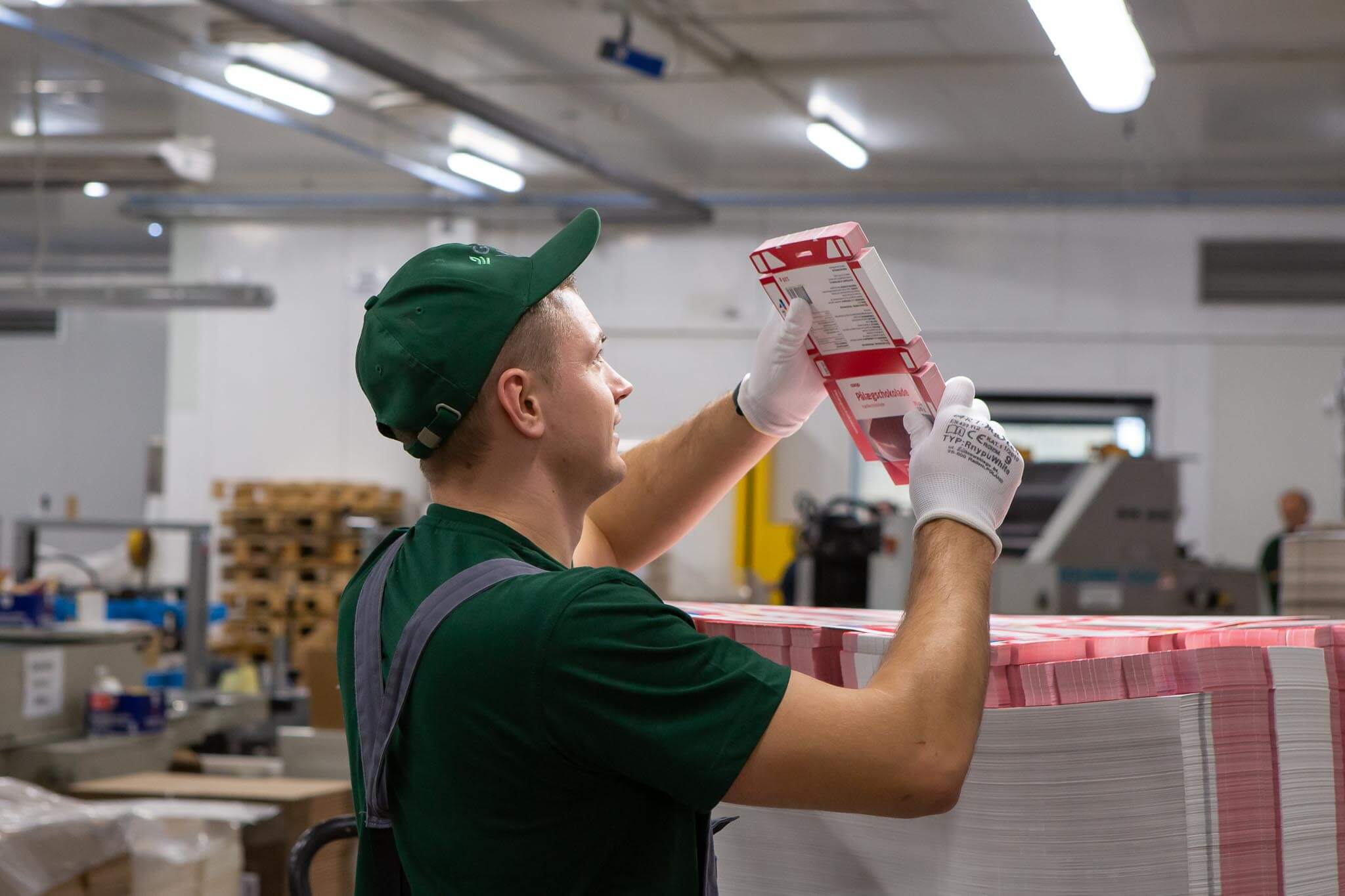
Potential threats and work-related hazards, that pose a risk of high-consequence injury, have been identified: performing tasks on heights, scaffolds, ladders and other unsteady structures; chemical substances (toxic, flammable etc.); operating dangerous equipment; Slippery or uneven surfaces; electrical infrastructure; excessive workload demands; tripping hazards; exposure to flammable materials. Threats have been determined based on the likelihood that the threat will take place at the company and the impact if and when it does. Occupational safety audits are performed periodically. We constantly review work place incidents, by consistent reporting, investigation, and identification of opportunities for improvement. Our work equipment is regularly inspected to ensure safety of operation. There are clear instructions or warning signs in a language understood by all employees on the relevant work equipment. Employees receive the necessary information regarding the safe use of work equipment, they are trained in the workplace and instructed on proper use procedures, i.e. employees are aware of the potential hazards. Employees training sessions in health & safety standards and procedures are hold on regular basis. During 2021, there was 1 accident recorded throughout the company (injury type – bruised finger caused by crushing the equipment door). The lost time injury (LTI) is the industry indicator used to gauge the success of our occupational safety efforts. In 2021, LTI was 1 working day with a lost time injury frequency rate of (LTIFR) 3.1 UAB Tuvlita helps us ensure that we meet all the necessary requirements related to employee safety and health.
To ensure a competitive compensation structure, we regularly review our compensation policy based on data analyses and benchmarks.
We regularly provide feedback to our employees. The Performance Management Process ensures that in addition to this regular feedback, a meeting is held once a year to evaluate our employees’ overall performance. Our units managers and employees agree on individual annual goals. The annual bonus depends on individual performance and achievements. Additionally, the bonus calculation also reflects the company’s overall performance, which we determine using various company key indicators.
The following essential criteria are considered in determining the remuneration of our company's employees:
We apply the whole concept of remuneration, which consists of the following components: the basic salary, a variable part of the remuneration paid for the results achieved, additional benefits (these are programs that create social welfare for employees and promote loyalty, in addition to basic and variable pay).
Remuneration of employees is reviewed once a year. In 2021, after reviewing the salaries of our company's employees, they were increased by an average of 12%.
There is no collective bargaining agreement at Vilpak. In accordance with national law requirements, a works council was established at Vilpak in 2018 with the purpose of informing and consulting employees. It is selected by the workforce for a three-year term of office.
As we produce food packaging, consumer safety is a nonnegotiable requirement for us and we comply with all legal requirements and the highest customer demands, requirements, and expectations. That is why hygiene is an extremelyimportant topic for us. Vilpak operates according to the highest standards on food safety and hygiene management to fulfill and exceed existing legal requirements and the demands and expectations of our customers and end-users. The demands we place on ourselves on a routine basis, along with the strict instructions that surround our operations, are the same ones we place on our suppliers and visitors. Because of this, we always ensure that the only people in our manufacturing spaces are those authorized to be there. When it comes to product safety, we comply with the following international standards and develop them further if required:
With Halal certification Vilpak ensures that products and services ,dedicated for the Muslim population, meet the requirements of Islamic law and are therefore suitable for consumption in both Muslim-majority countries and in Western countries, where there are significant population groups, practicing the Islamic faith. In 2021 Vilpak received the highest AA score in grading scale for BRC audits.
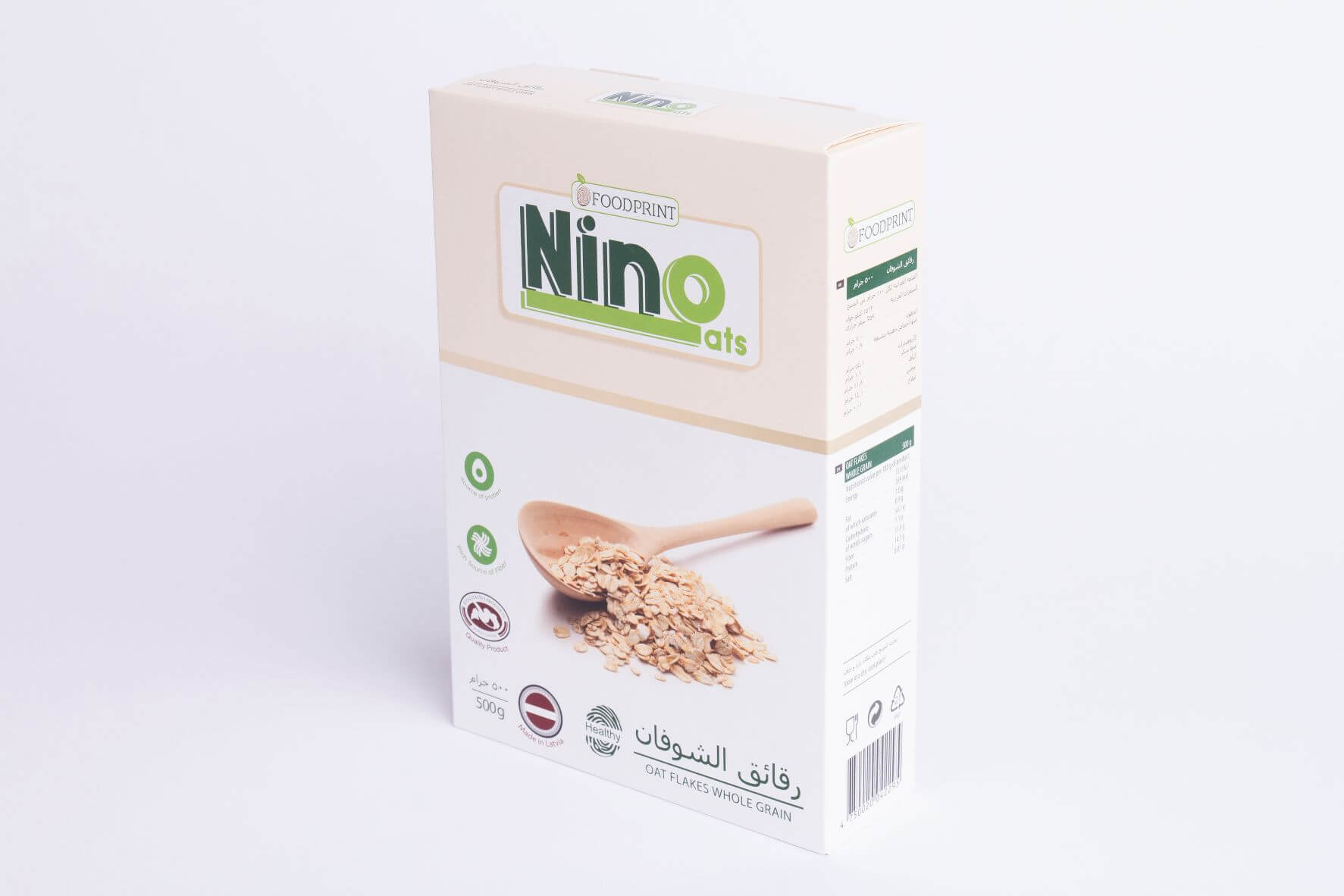
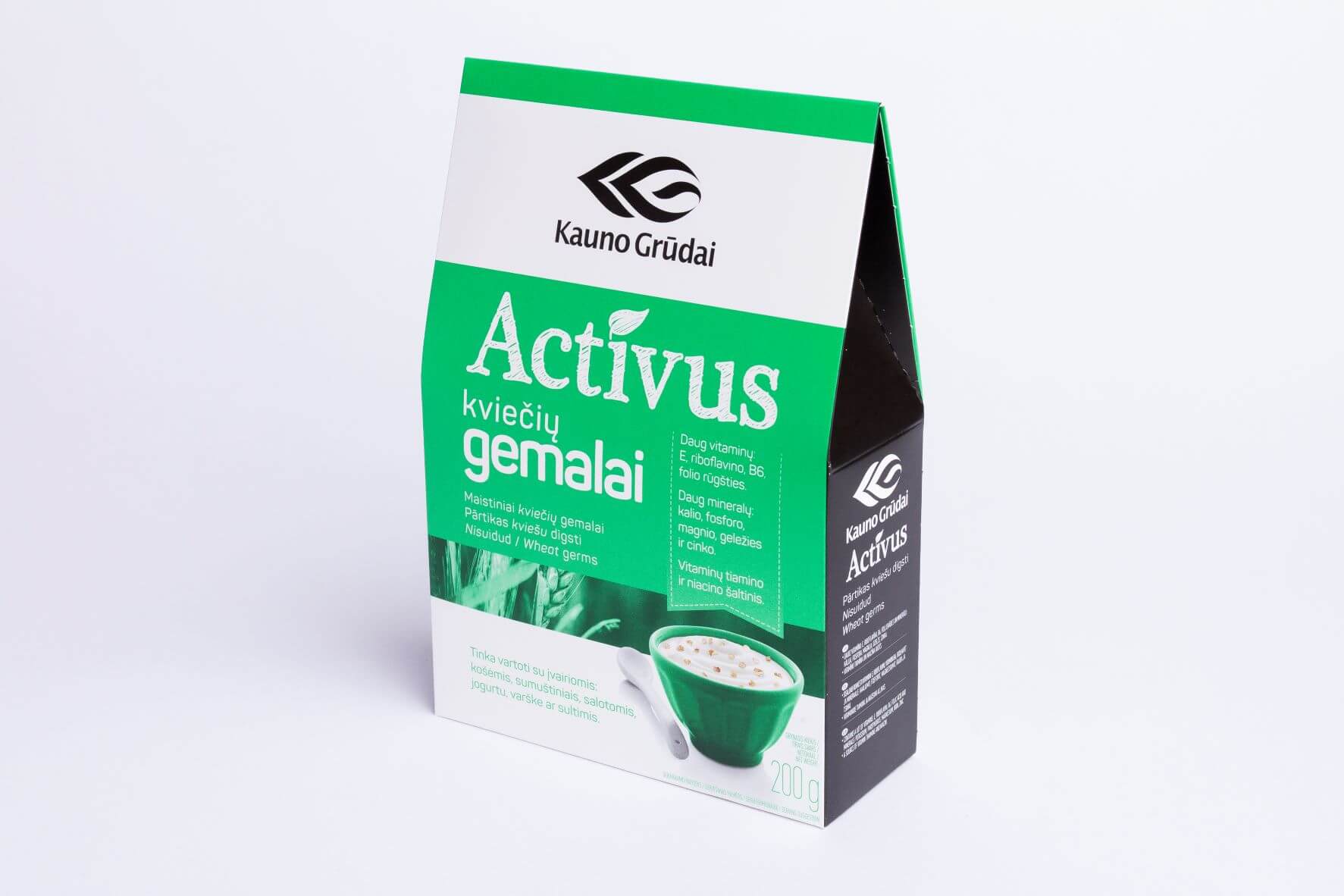
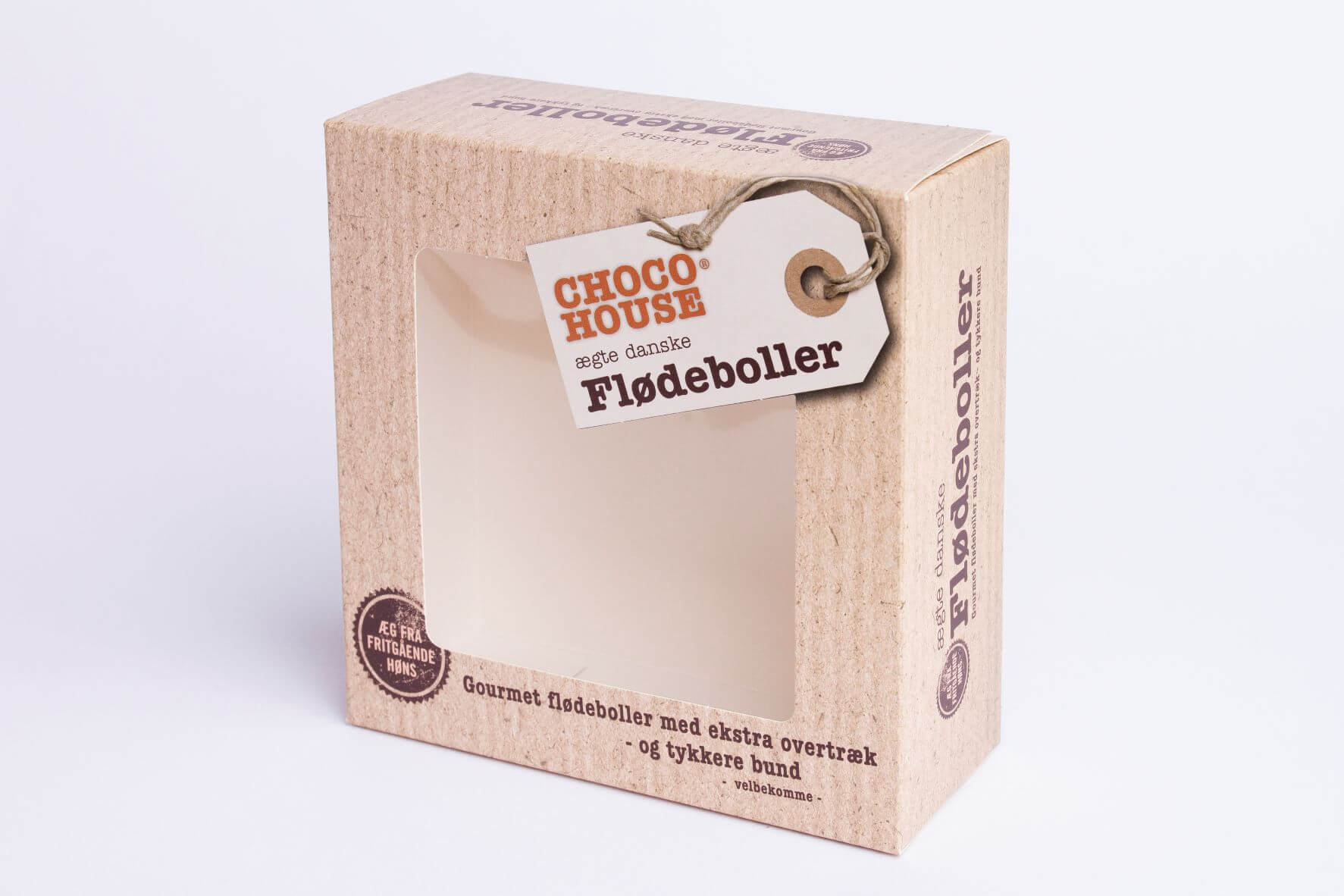
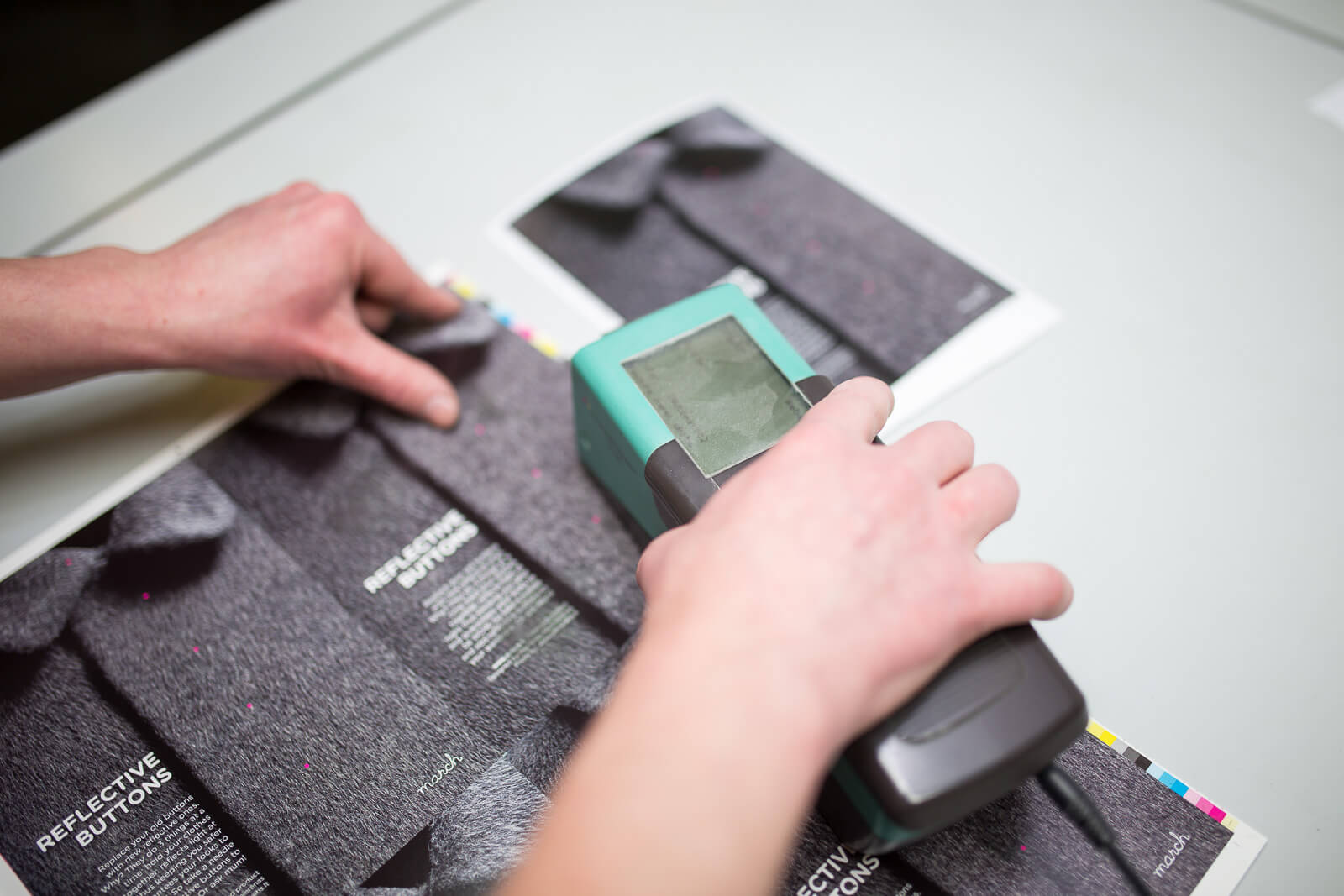
Vilpak has a functioning non-compliance management system in place consisting of: design, documentation, implementation, auditing, and continuous improvement combined with a clear understanding of the process and process objectives through training, communication and a supportive culture. All employees have a responsibility to report non-conformances, and potential non-conformances to the responsible person in the company. Non-conformance management is a key Quality Management System performance indicator and can quickly identify systemic issues within the Company, therefore, it is one of our major priorities. In the past year, we experienced 337 cases of product quality non-conformance, of which 240 were internal cases (fixed at site), and 97 were external (customer complaints) representing 1.01% of annual sales. There were no incidents of non-compliance concerning the health and safety impacts of products and services. Many factors can impact the quality and condition of packaging and the products they contain. Thus, in 2021 Vilpak began developing a quality control lab establishment plan to ensure a smooth production process, improve product quality and safety, along with addressing our customers’ needs and comments. The location and size of the premises that requird testing equipment and the necessary monitoring processes have already been decided and are already in the planning stage. Outfitted with new testing equipment the quality control lab enables us to: monitor creasing characteristics, folding angle, checking the height/width of creasing, etc., resulting in superior creasing; the measurement of all forces required to erect and fill cartons; crease resistance (springback), board stiffness, carton opening force, crease opening force; assess coating and substrate suitability; test the rub resistance of printed material, along with multiple other characteristics.
In order to ensure operational due dilligence, the Company performs annual internal review and auditionof selected processes, , in order to determine their effectiveness, also impact on the economy, environment, and people.
Any urgent concerns, risks or issues, related to sustainability topic, are to be raised for the attention of the management team during our daily operational management team meetings. The issues can be either addressed and resolved on the spot, or raised further for the attention of the shareholders.
The evaluation of the performance of the management team in overseeing the company’s impacts on the economy, environment and people, is conducted on annual basis through the process of annual individual evaluations of management team members, including the CEO. This process includes not only the review and evaluation of results, but also the setting of future individual and organizational goals.
Well-developed policies and procedures help us to ensure legal and regulatory compliance, whether it is directly within the company, or in external interactions with other companies and customers. Our developed policies and procedures are action oriented, timely and current, periodically reviewed for clarity and conformance, and properly enforced by management. Our culture and compliance expectations are based on the company values, and we practice these principles every day, followingthe policies that govern our organization. Policies and procedures enable us to operate effectively and successfully, together they reduce the risk of liability. In addition, they promote consistency across the organization for both, employees and customers.
Top management team has developed, implements and maintains the following policies:
The Vilpak Code of Conduct addresses the most important corporate principles and ethical behaviour in our business practices, relationships with our stakeholders, and working environment. General provisions and principles of the business ethics are set out in compliance with international human rights standards, Respect for Human Rights. It serves as a guidance for all employees of our company, how to behave in everyday situations. The Code of Conduct and other policies documents are reviewed regularly and re-approved by the top management. All new employees are educated in the Code of Conduct and relevant policies, long-term employees are furnished with contstant updates; including ways to report incidents to senior management or anonymously through our whistleblowing service.
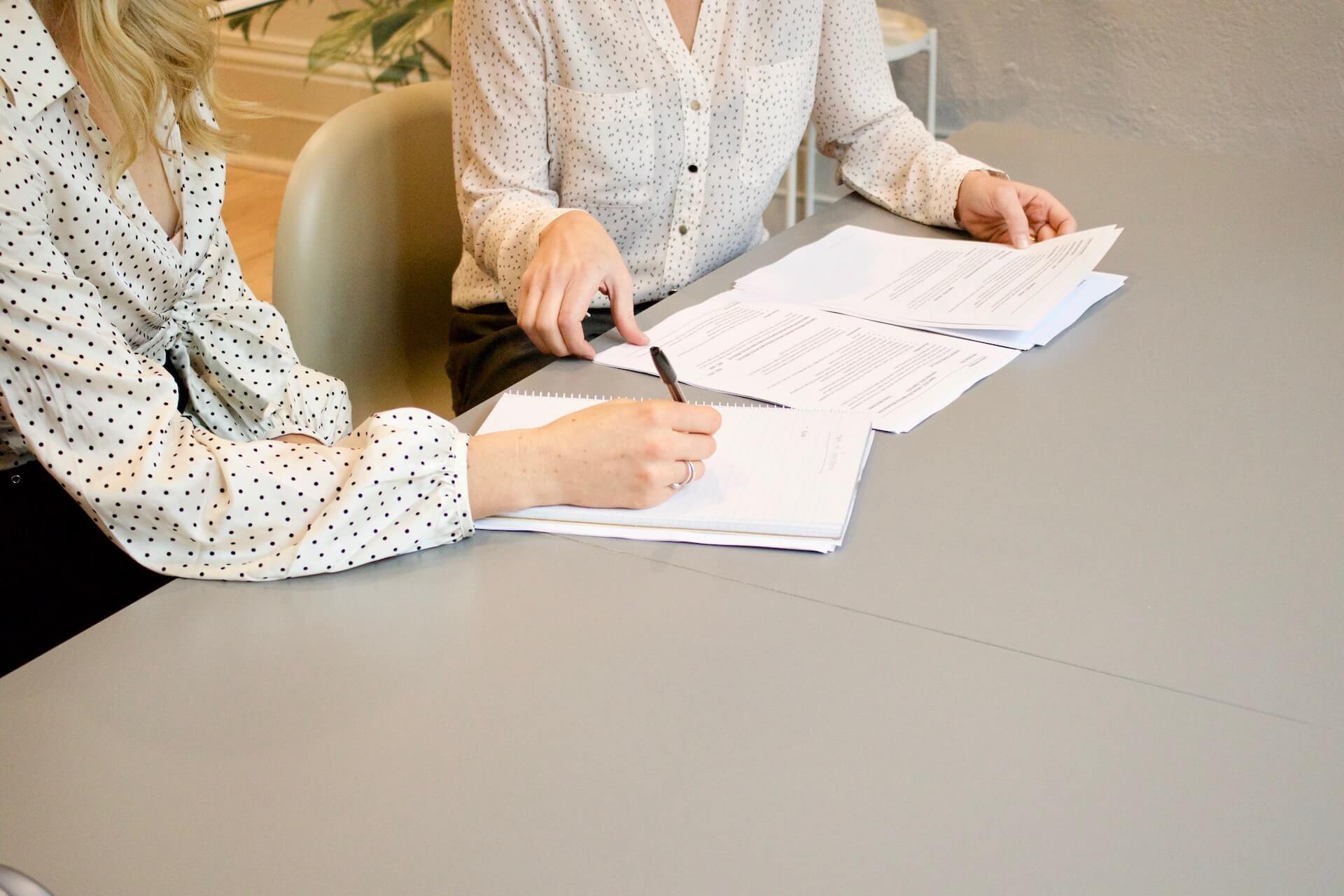
Each company policy document is distributed to the specific measurable objectives of the relevant division ensuring its implementation. The implementation of the objectives are reviewed at least once a year during the management review.
If Vilpak causes or contributes to a negative impact or misconduct due to its activities, it is established to take action under the already in-place Internal Risk Management Plan. The company's obligations to eliminate adverse effects are set out in the documents defining its policies. Additionally, a procedure has been developed for the management of non-compliant products, processes, and activities.
All employees, at all levels of the company, are responsible for complying with the governance framework in their everyday decisions and actions. The Vilpak whistleblowing procedure was established in 2018 and is an important tool fostering the highest standard of business ethics and awareness regarding misconduct. Anyone in the company can anonymously report actual or suspected breaches of our Code of Conduct, or any other unethical behavior, directly to either the senior manager, the relevant supervisor, or the head of HR without being penalized in any way. Every case of a breach of our Code of Conduct is handled individually and investigated appropriately. No cases were reported during 2021.
Vilpak is committed to combating all forms of corruption and bribery and maintains a zero tolerance policy to such behavior: whether illegal activity or negligence by an employee, supplier, or business partner. No incidents of corruption were registered in 2021. We strive for integrity and compliance with the principles of proper business ethics throughout our entire business. Continuous training, interactive discussions, and risk assessments help us increase awareness and act responsibly.
We use the SEDEX (Supplier Ethical Data Exchange) online platform to provide up-to-date information on the status of our processes related to sustainability, and to build trust and transparency with our customers as part of our approach to responsible sourcing across the supply chain. The process may also be accessed directly by our customers.
| Primary packaging | Secondary packaging | Tertiary packaging | ||||||
|---|---|---|---|---|---|---|---|---|
| Material | Details of material | Weight | Material | Details of material | Weight | Material | Details of material | Weight |
| Glass | Brown glass | Paper | Paperboard FSC/PEFC | Paper | Cardboard packaging | 198 tonne | ||
| Plastic | PET | Wood | 383 tonne | |||||


(packaging made up of more than one type of material that are not separable physically)
Examples


